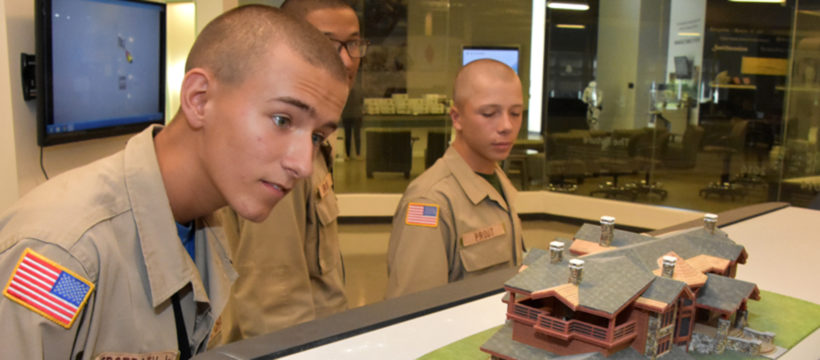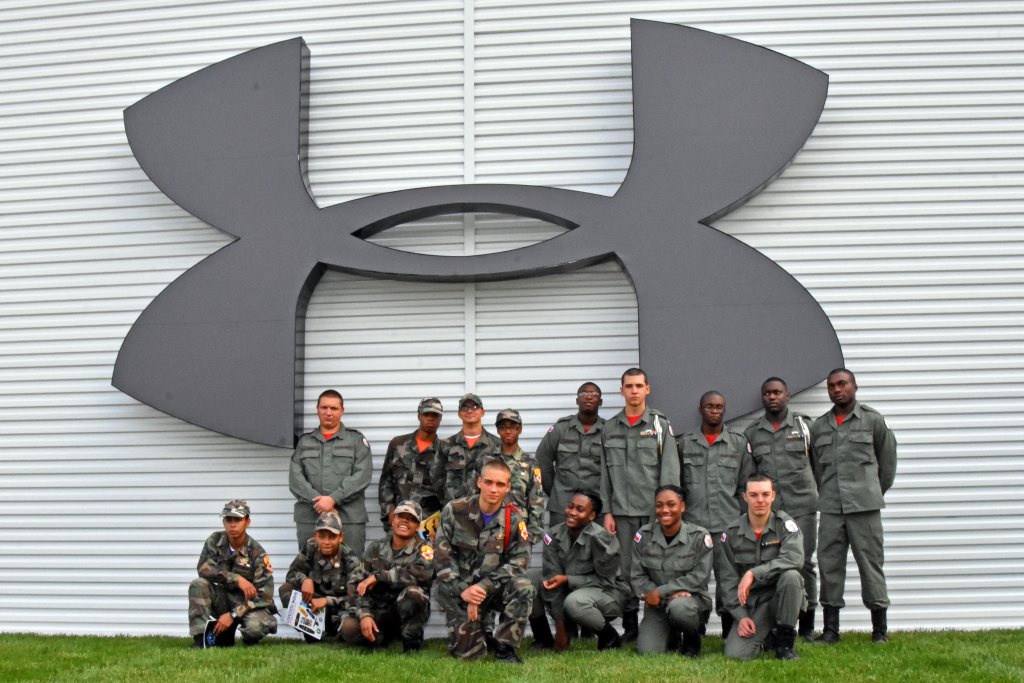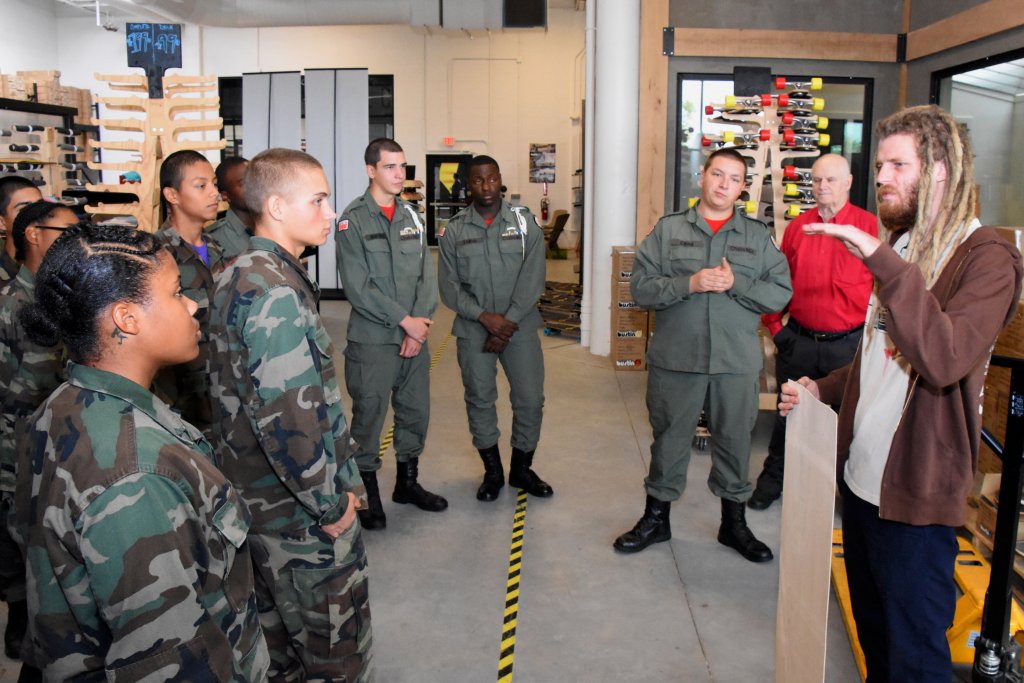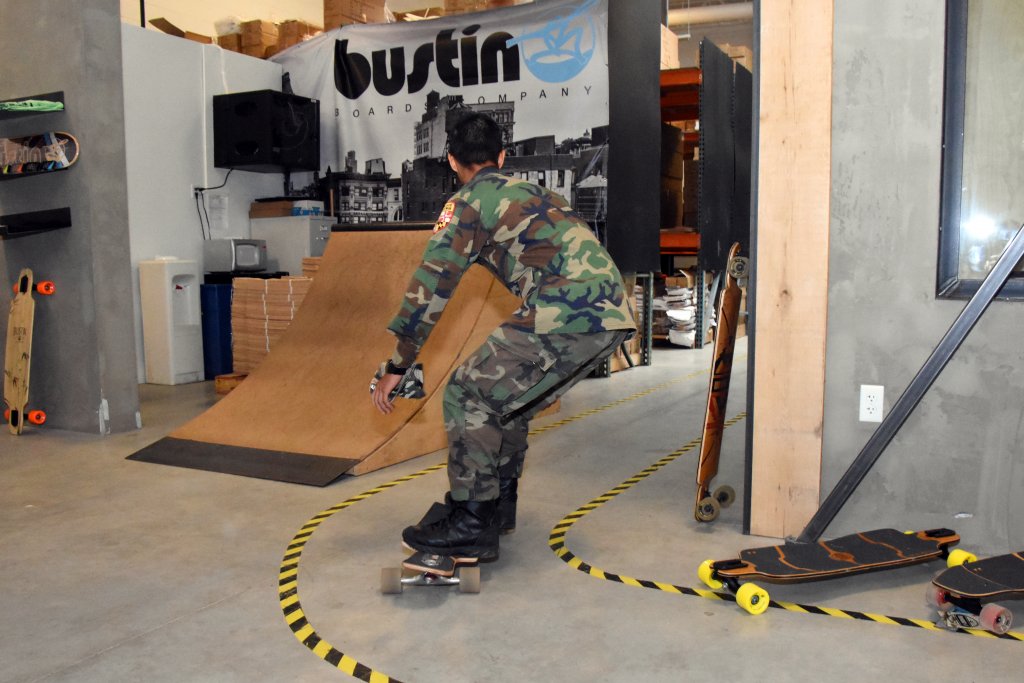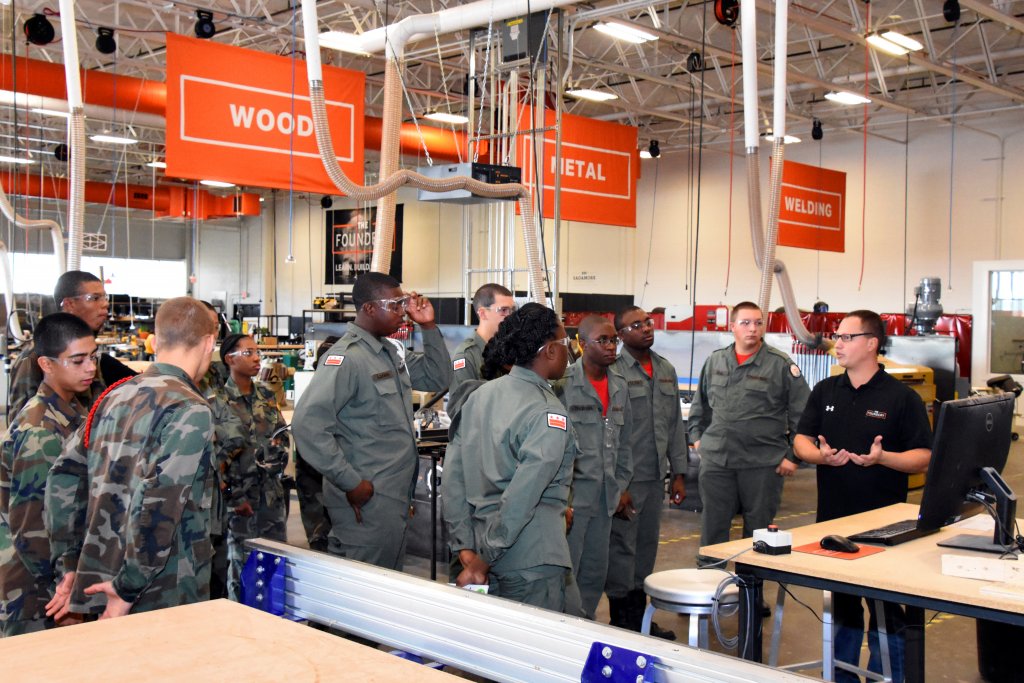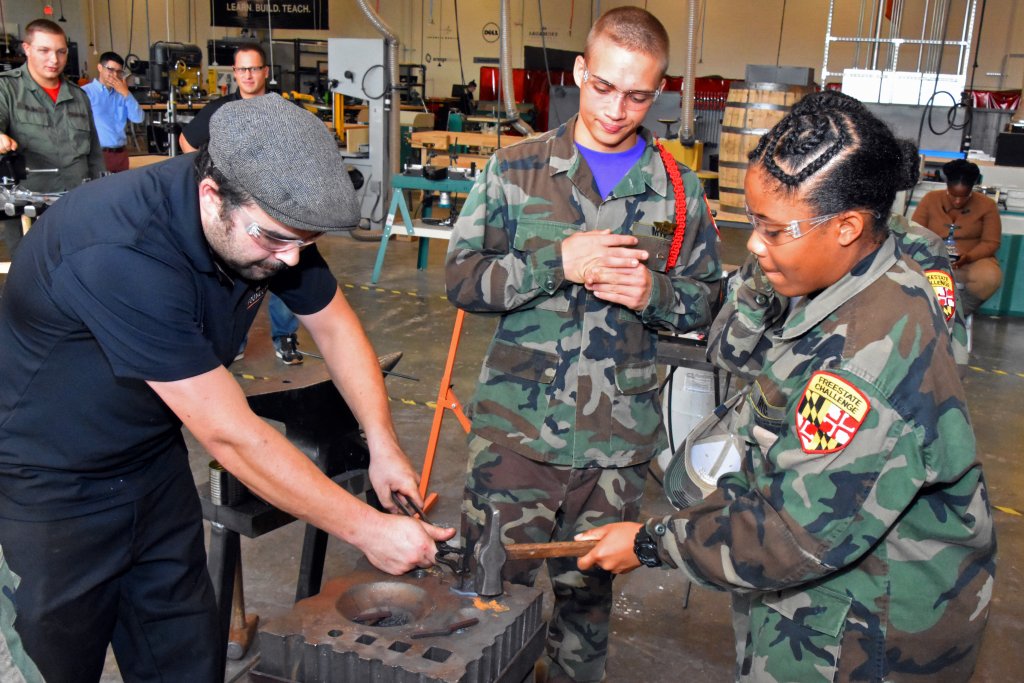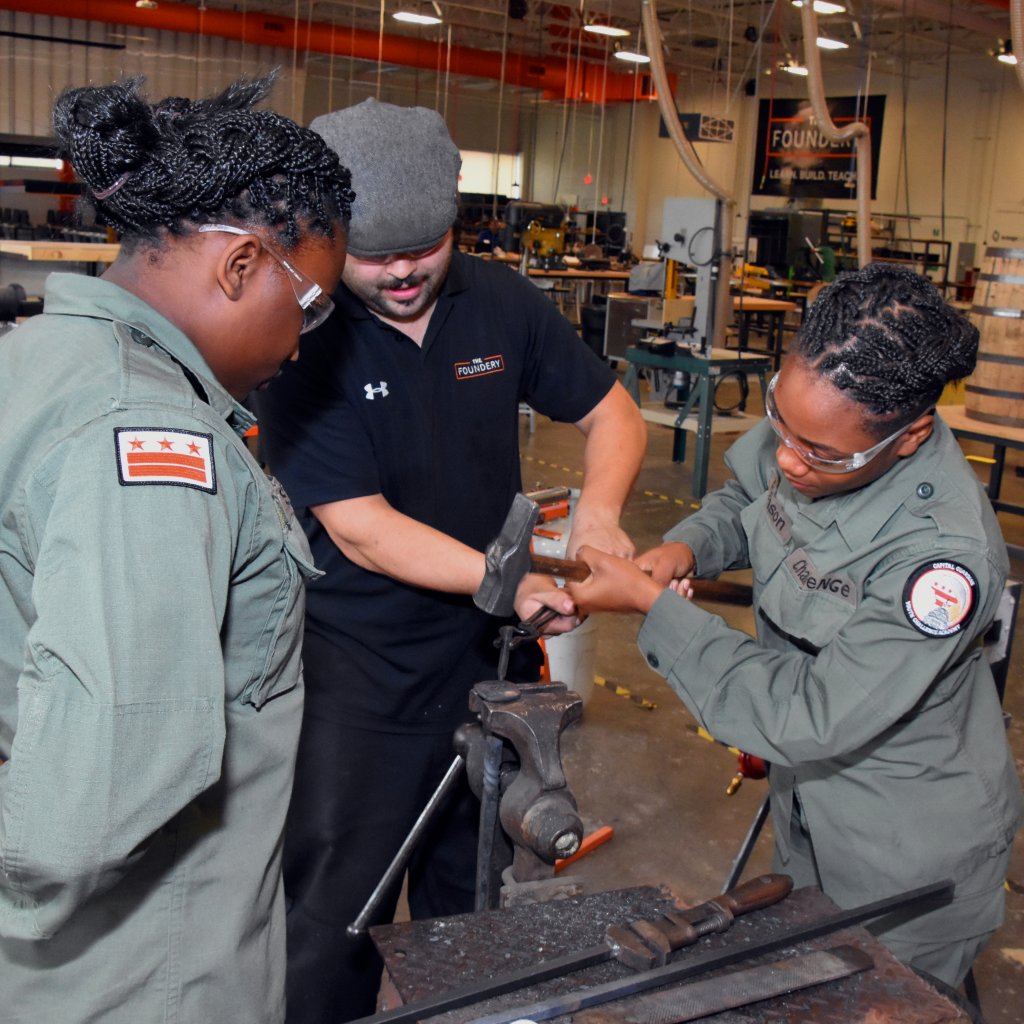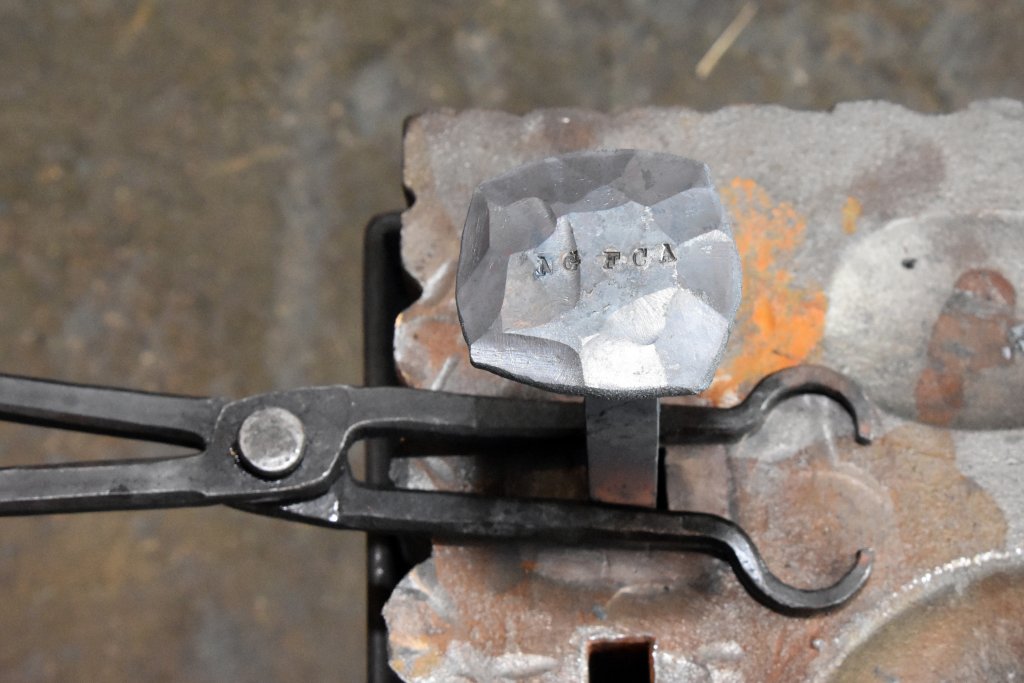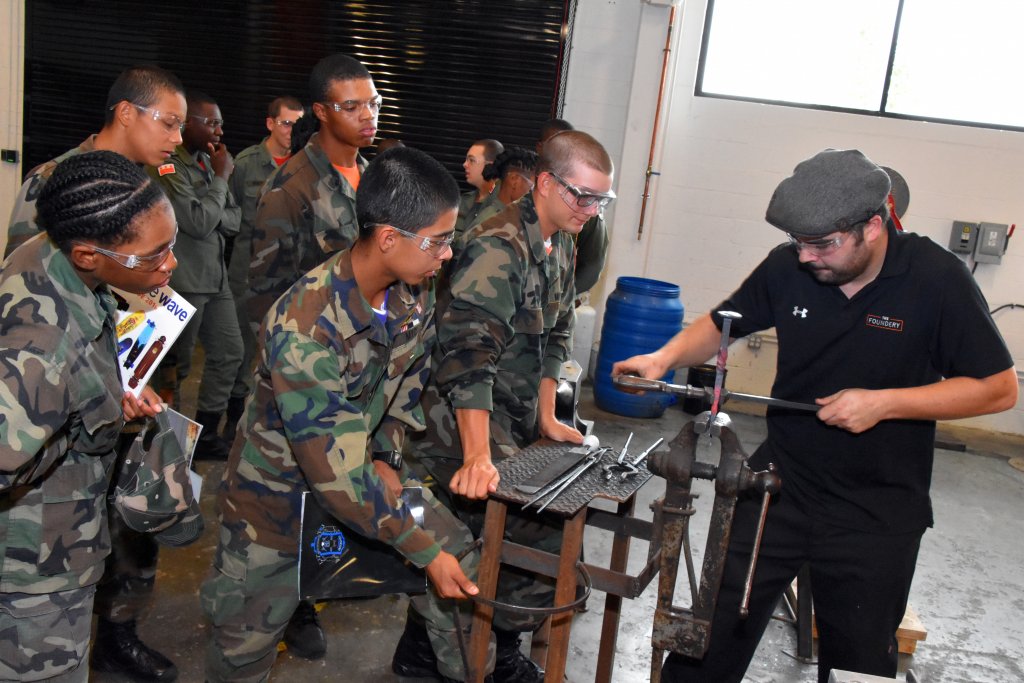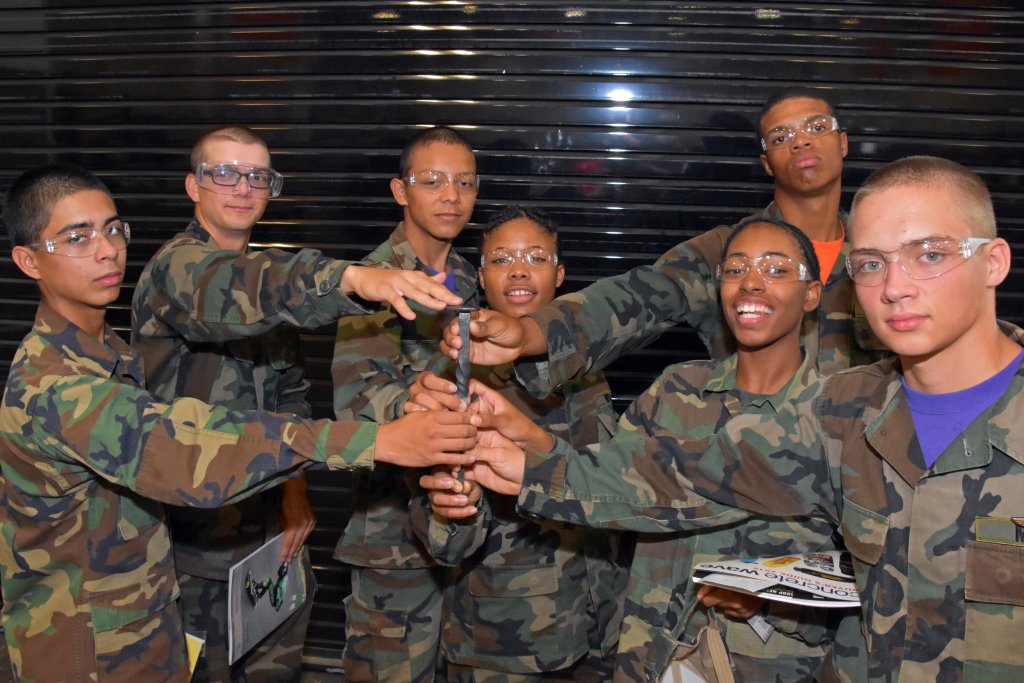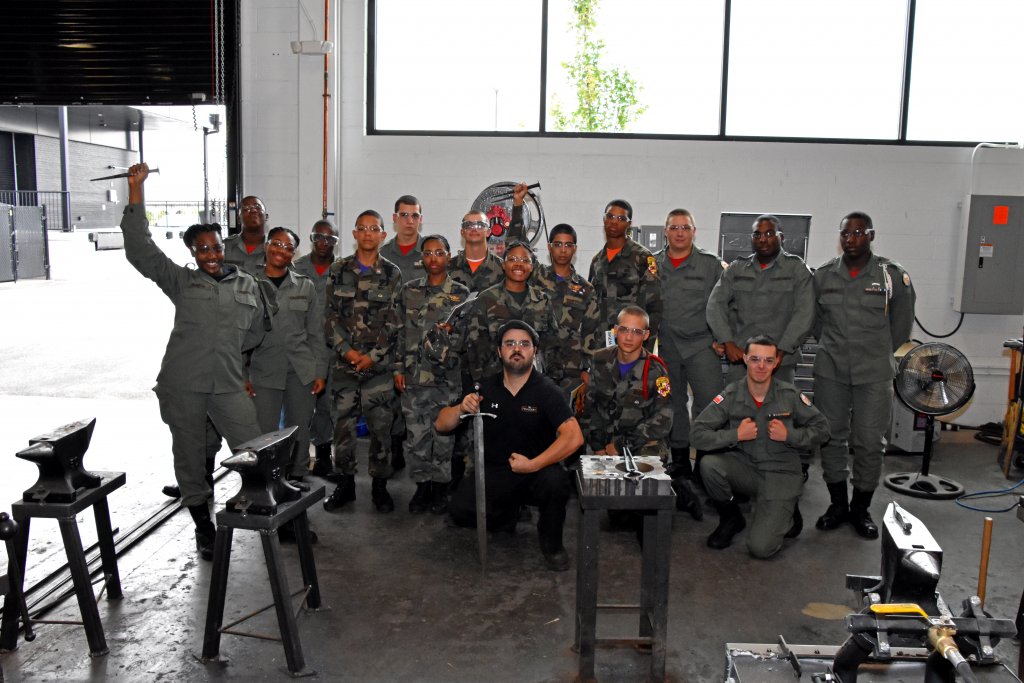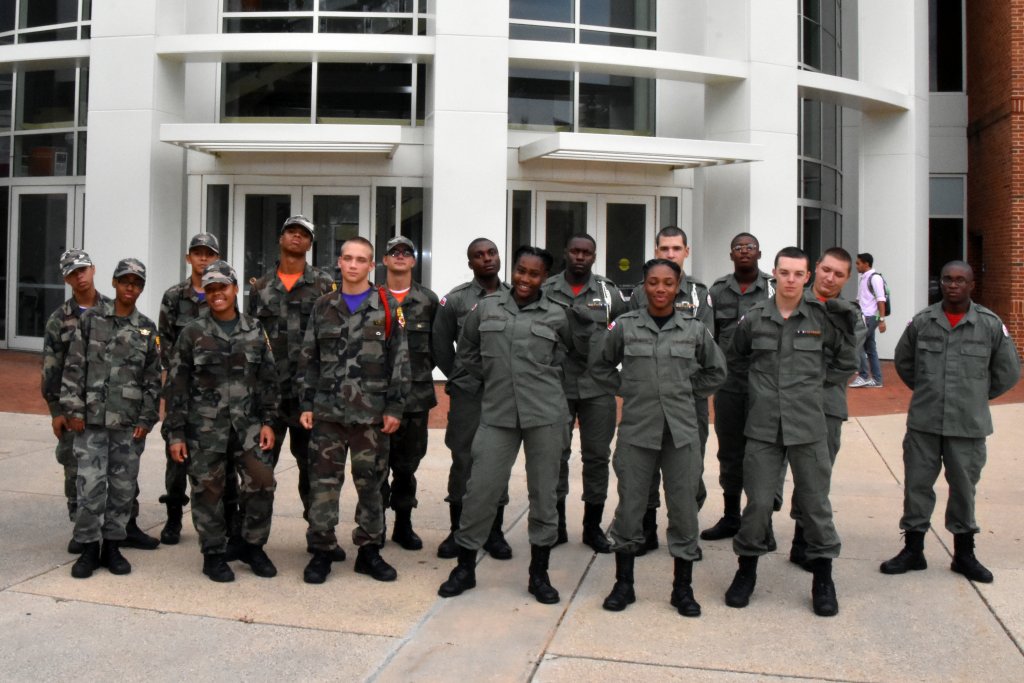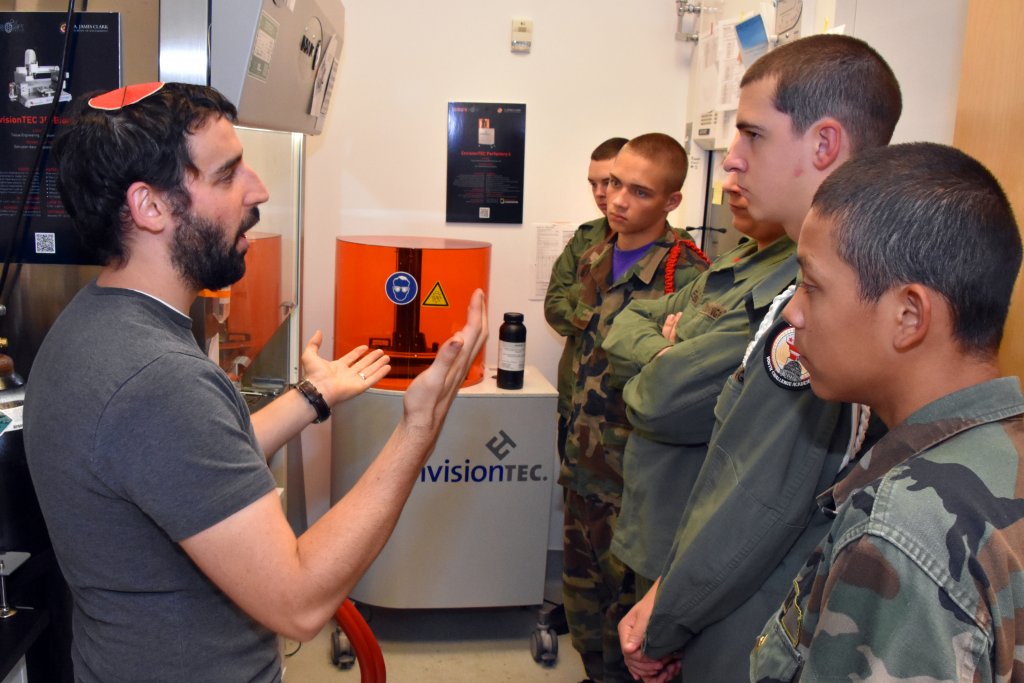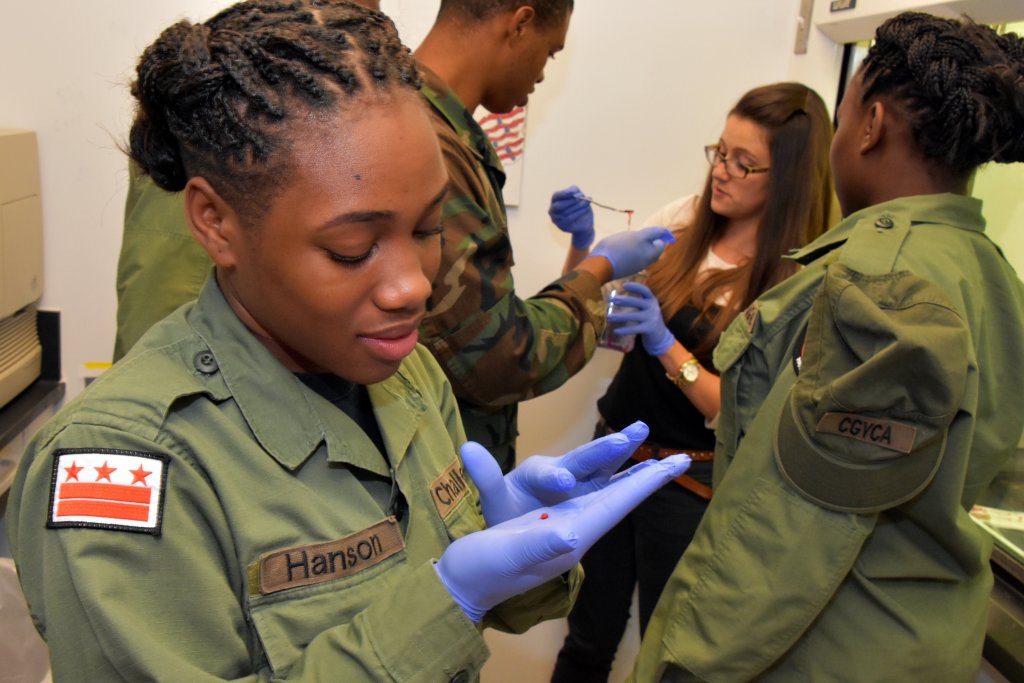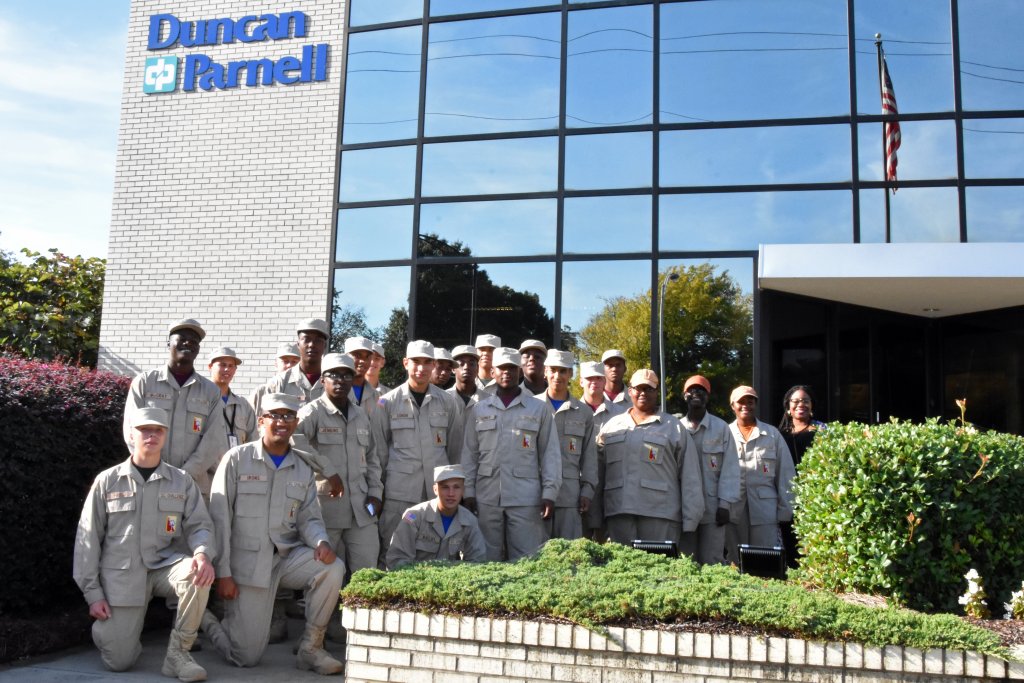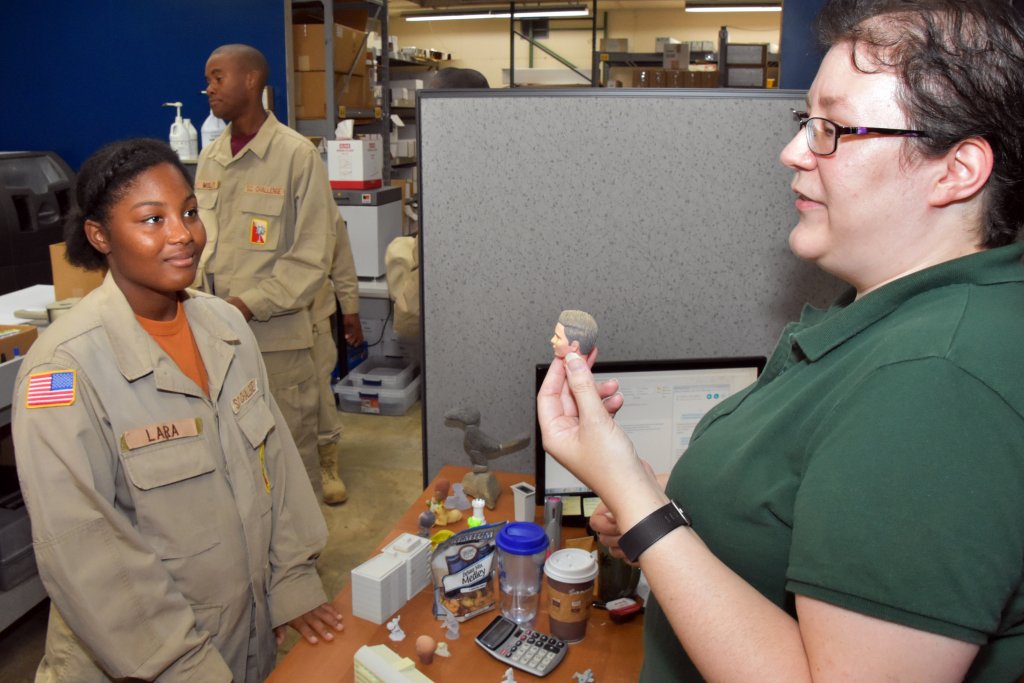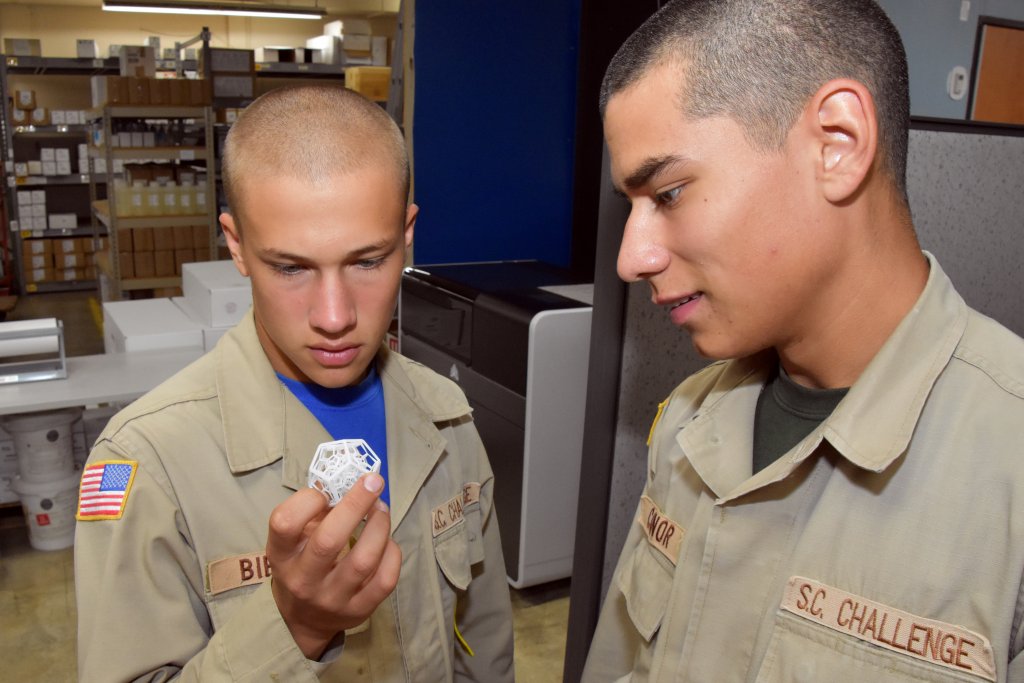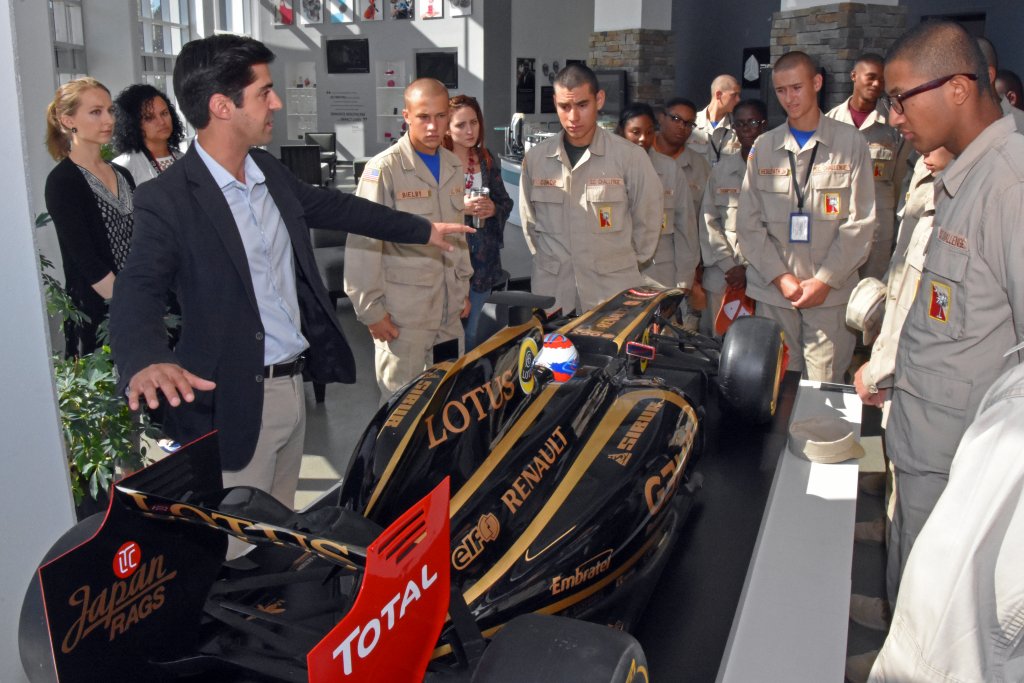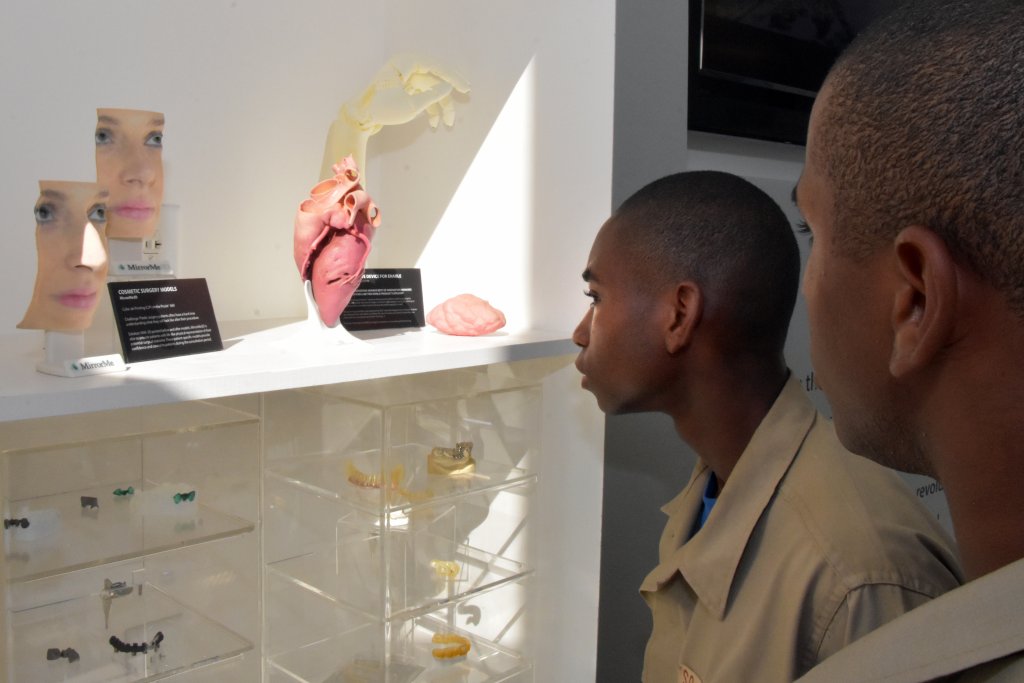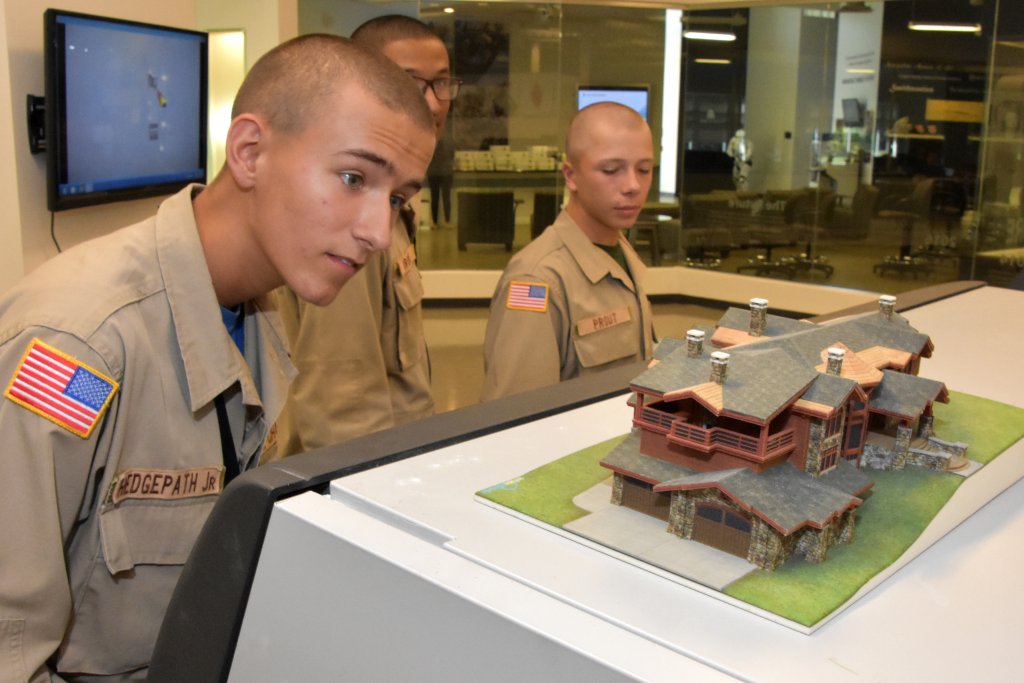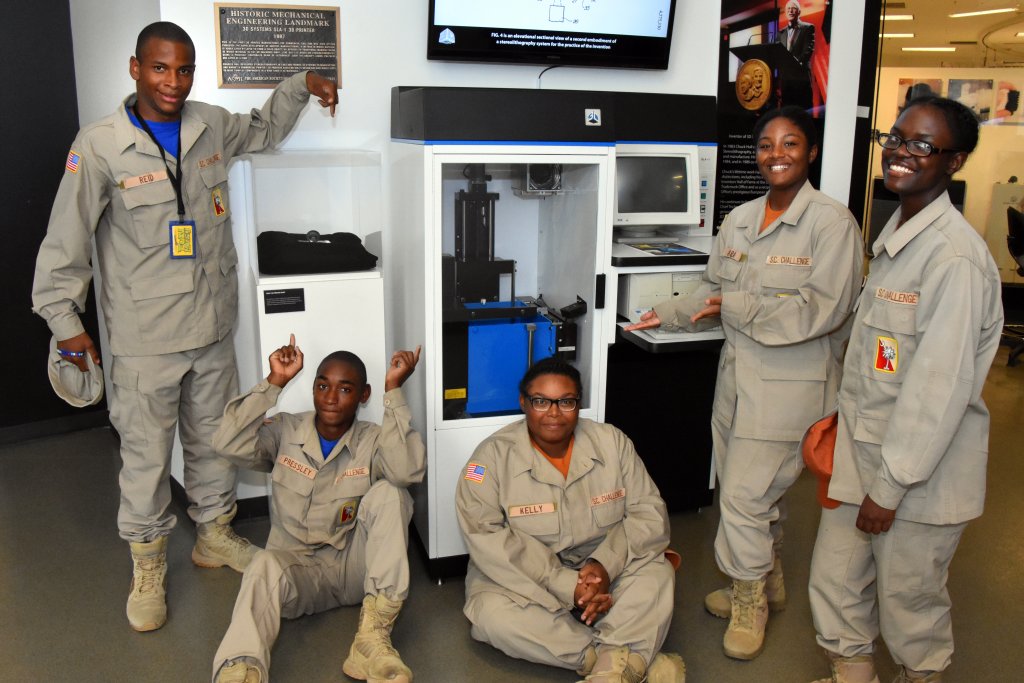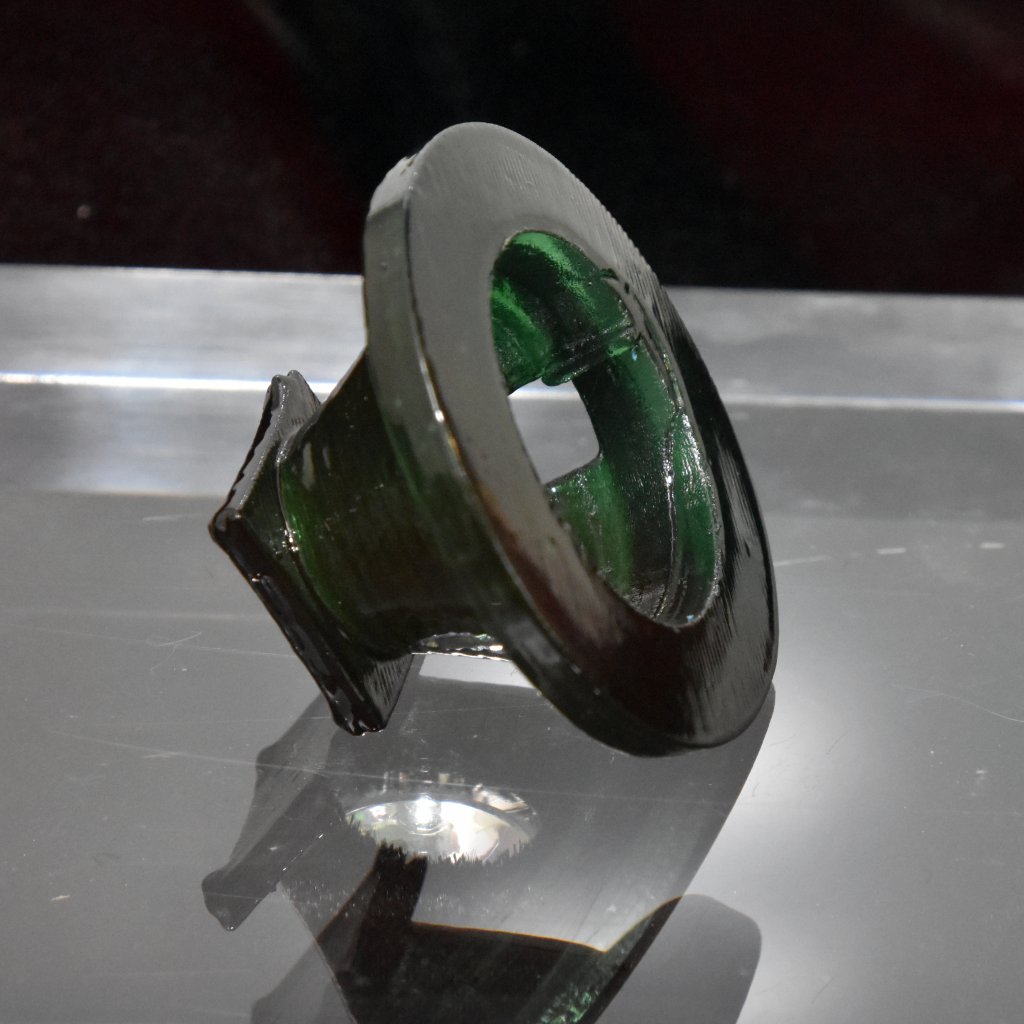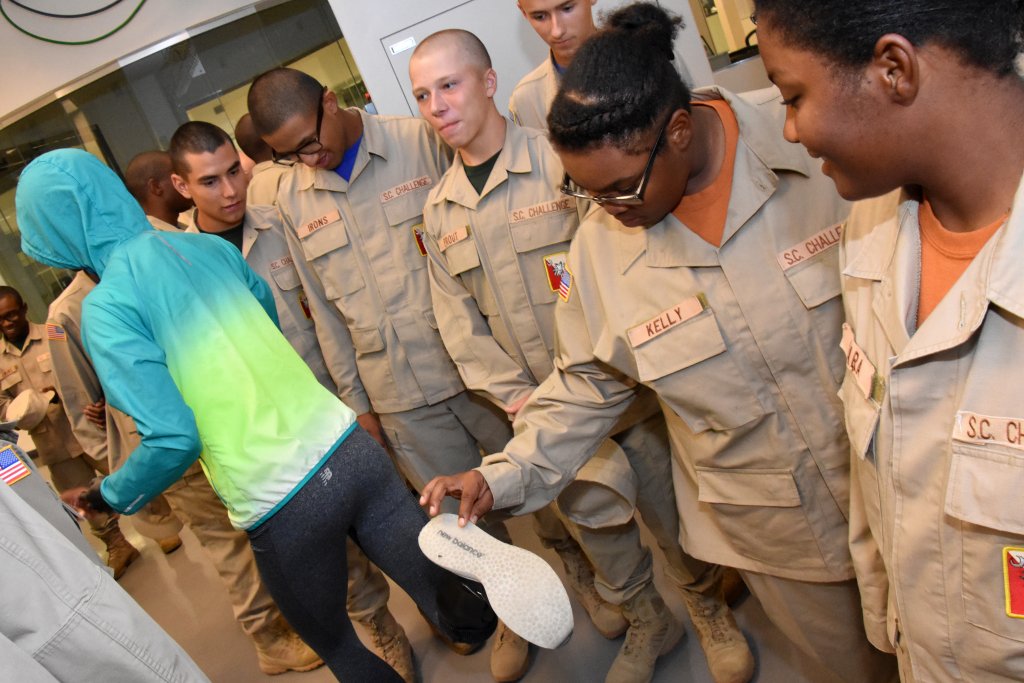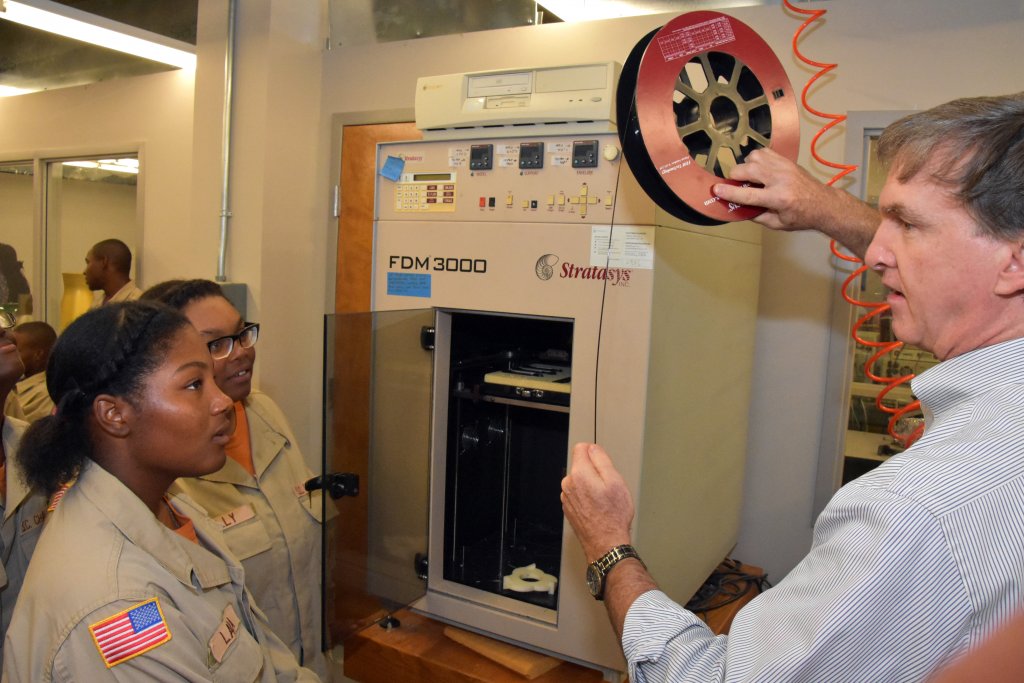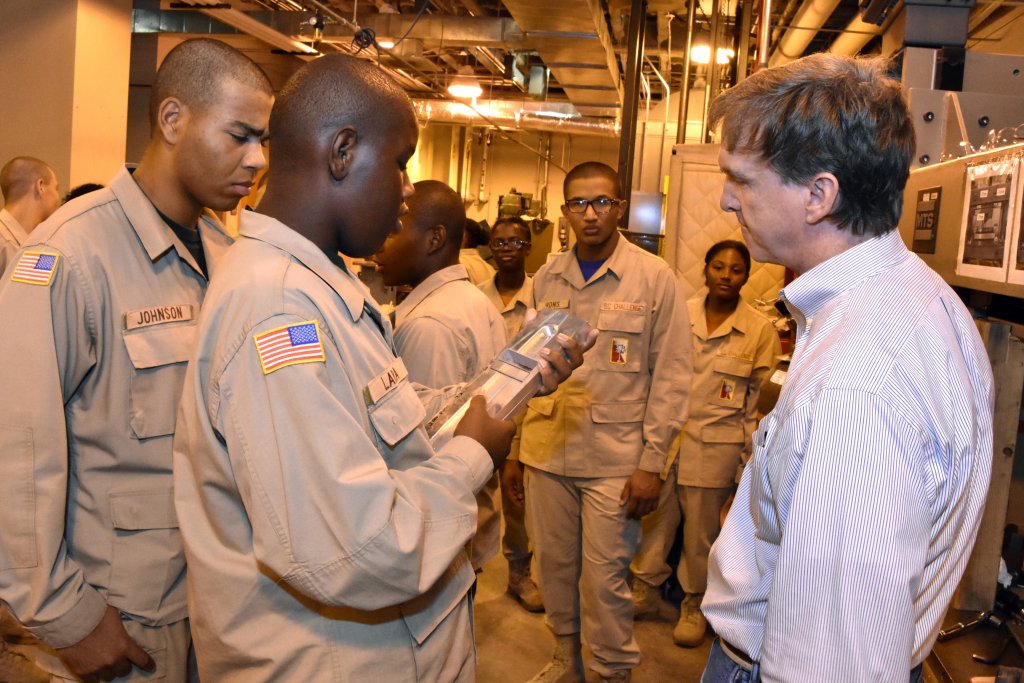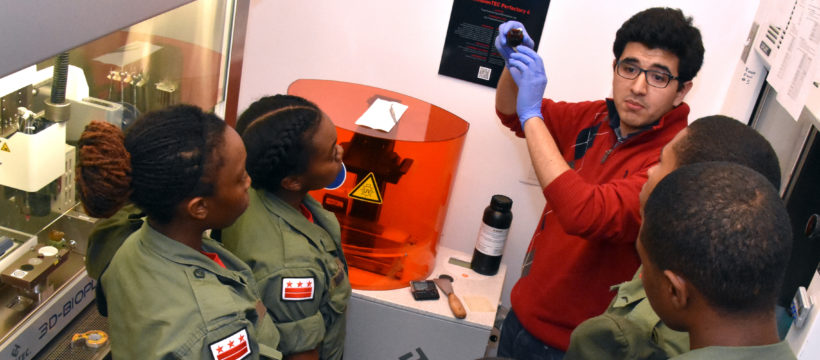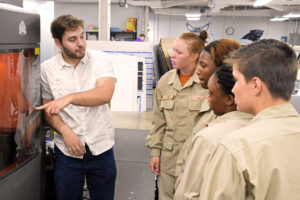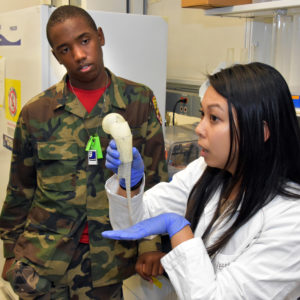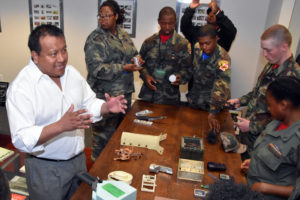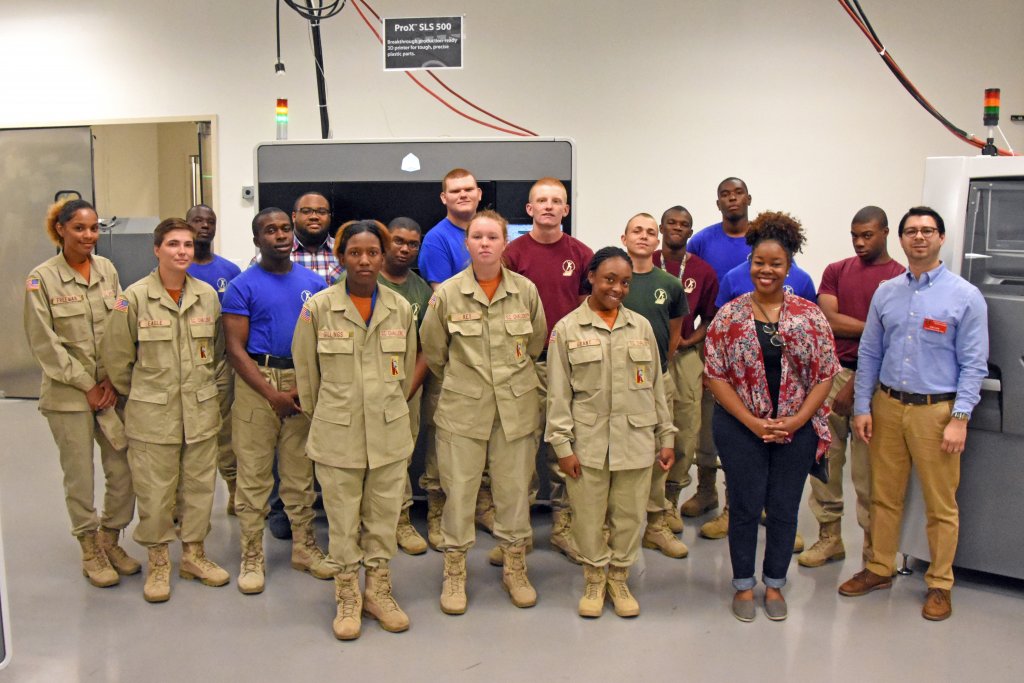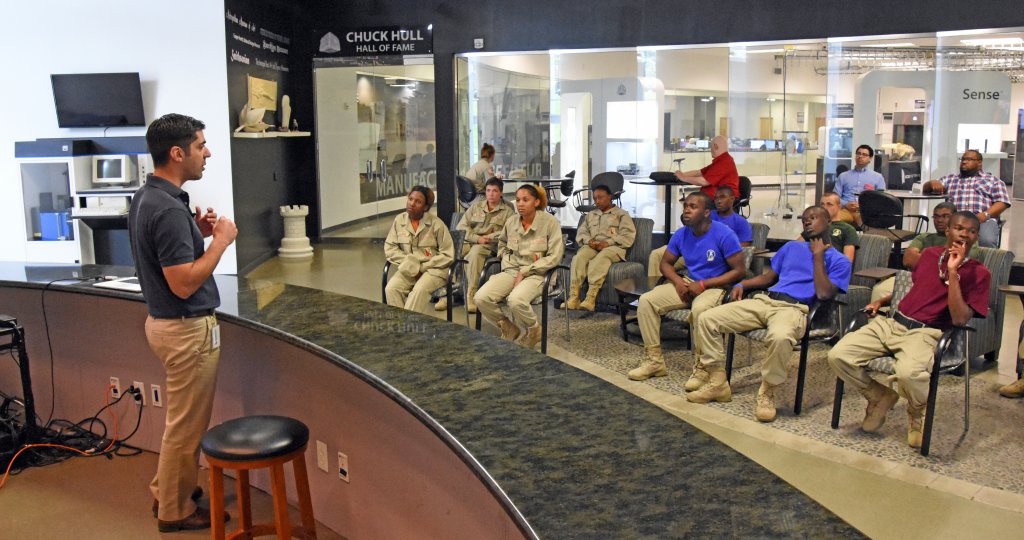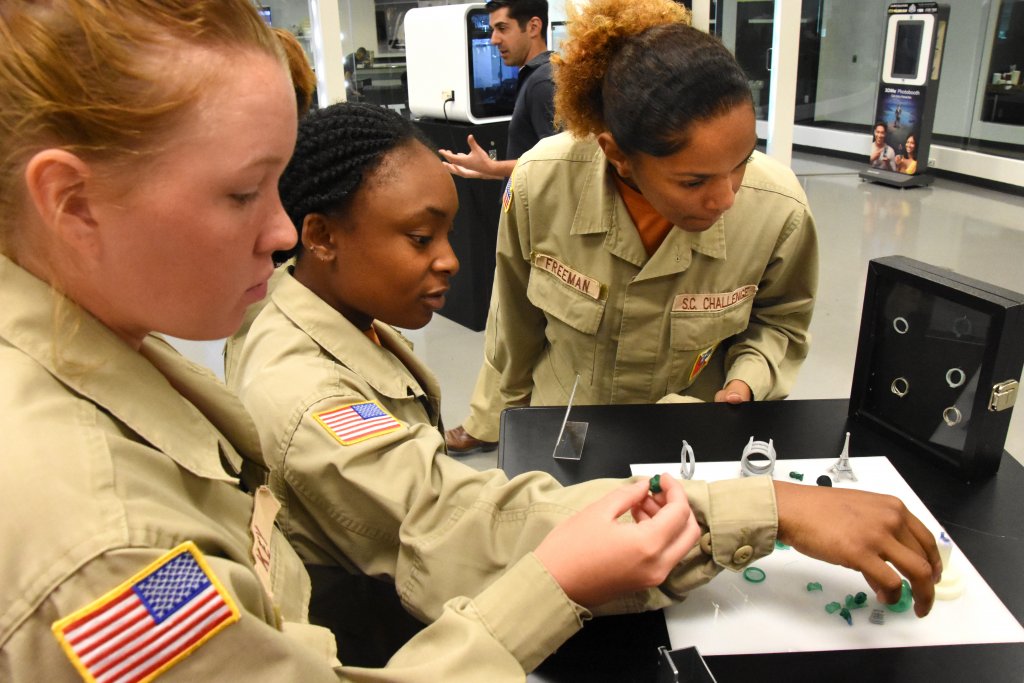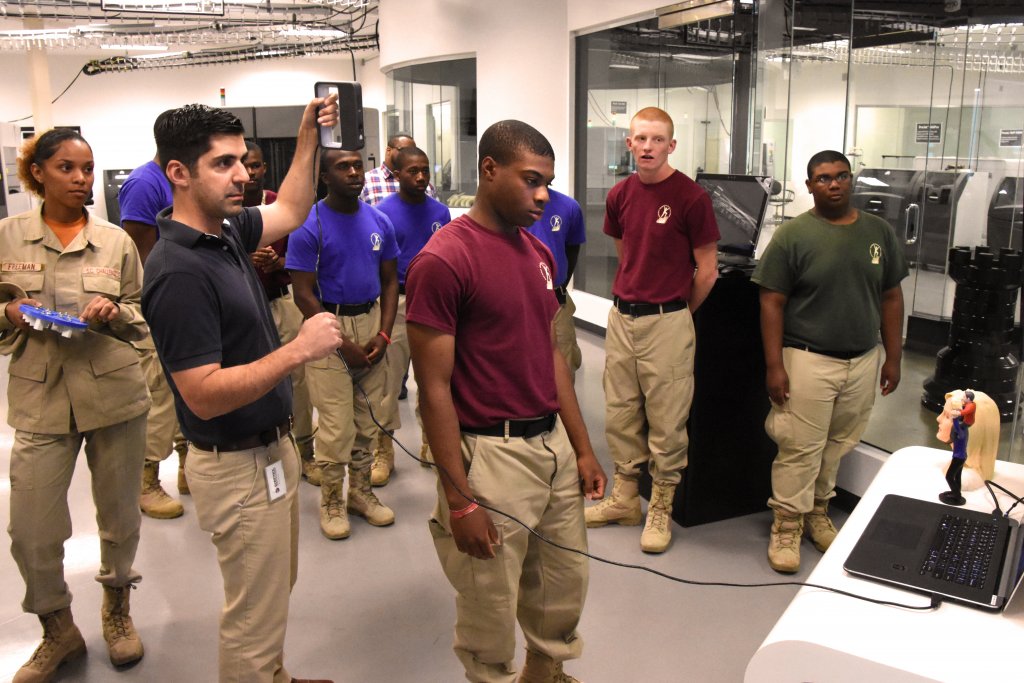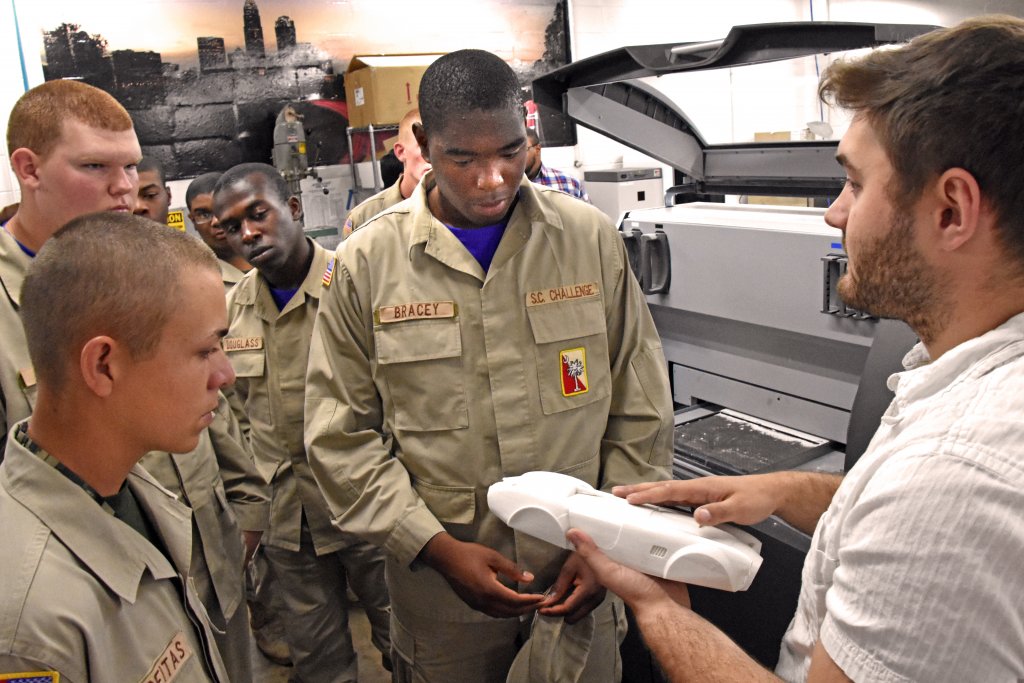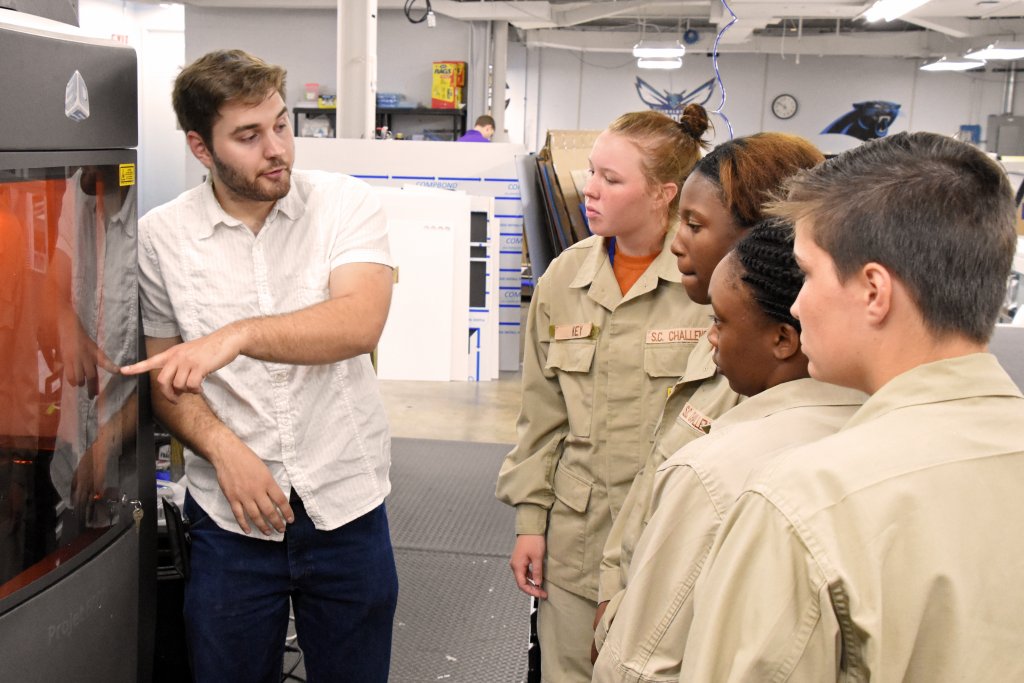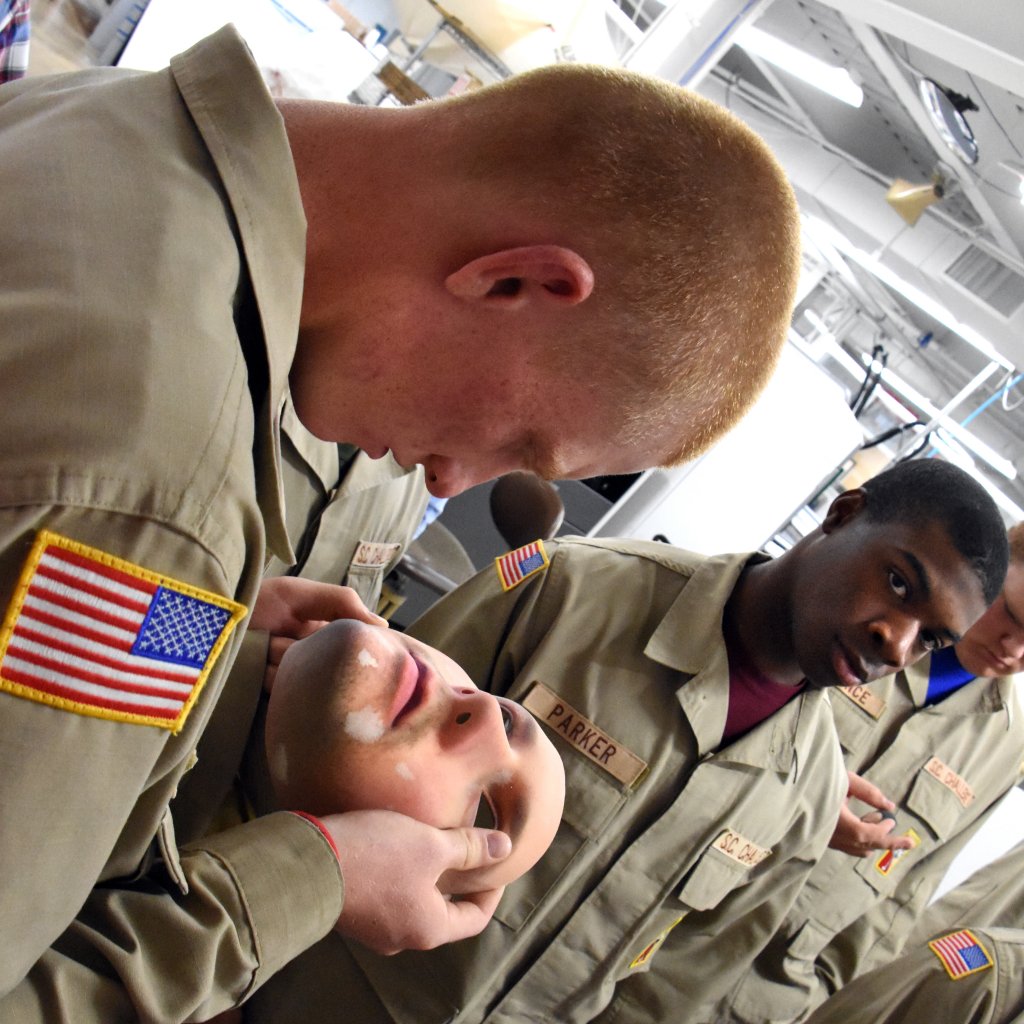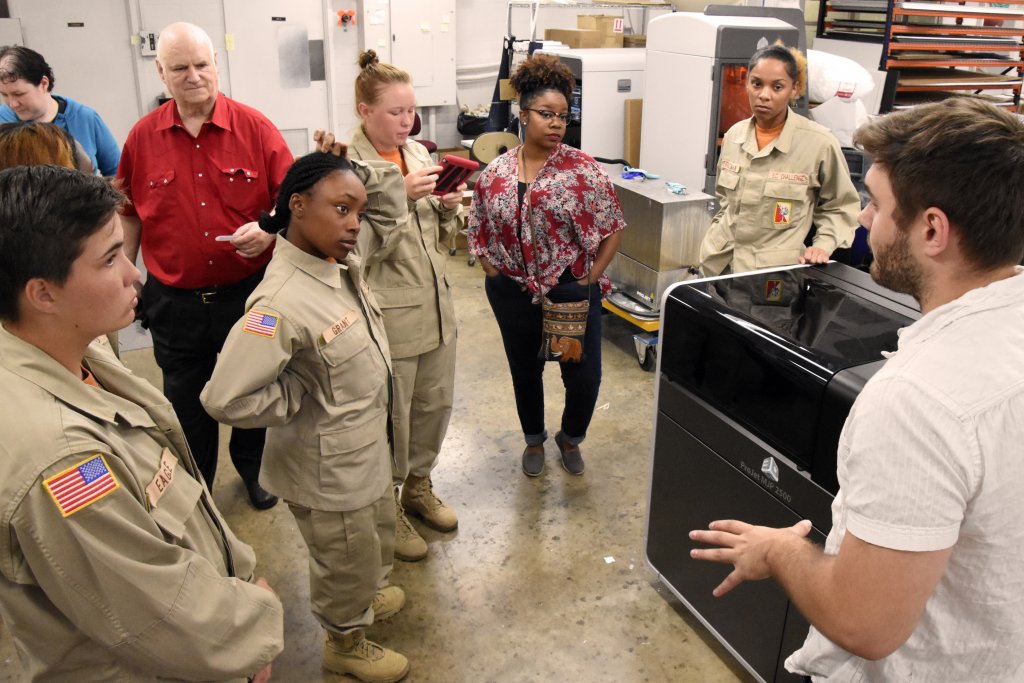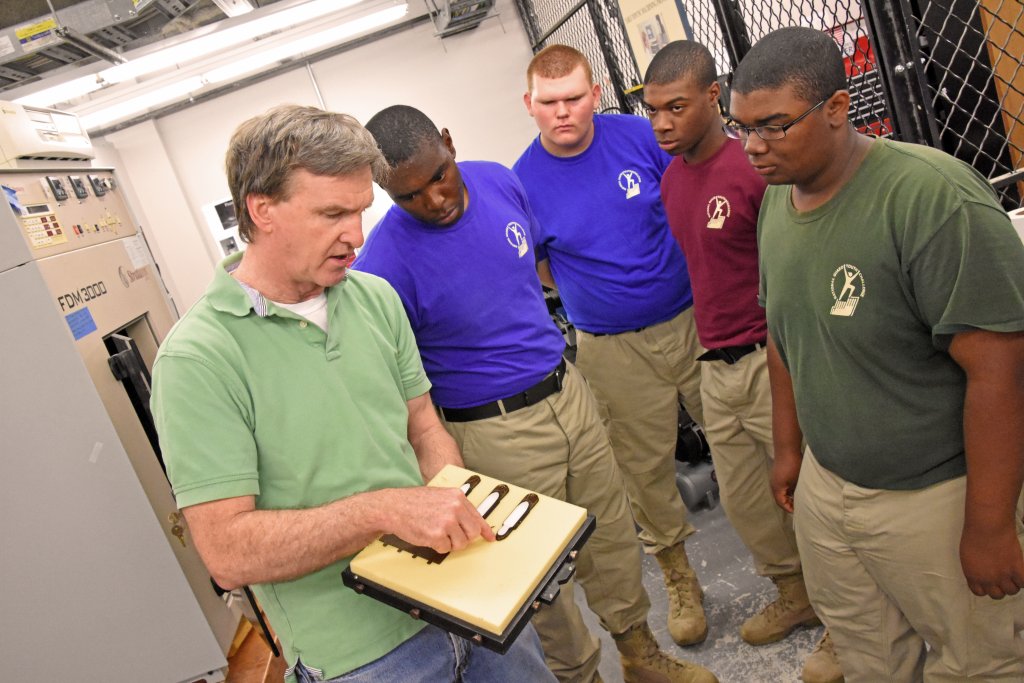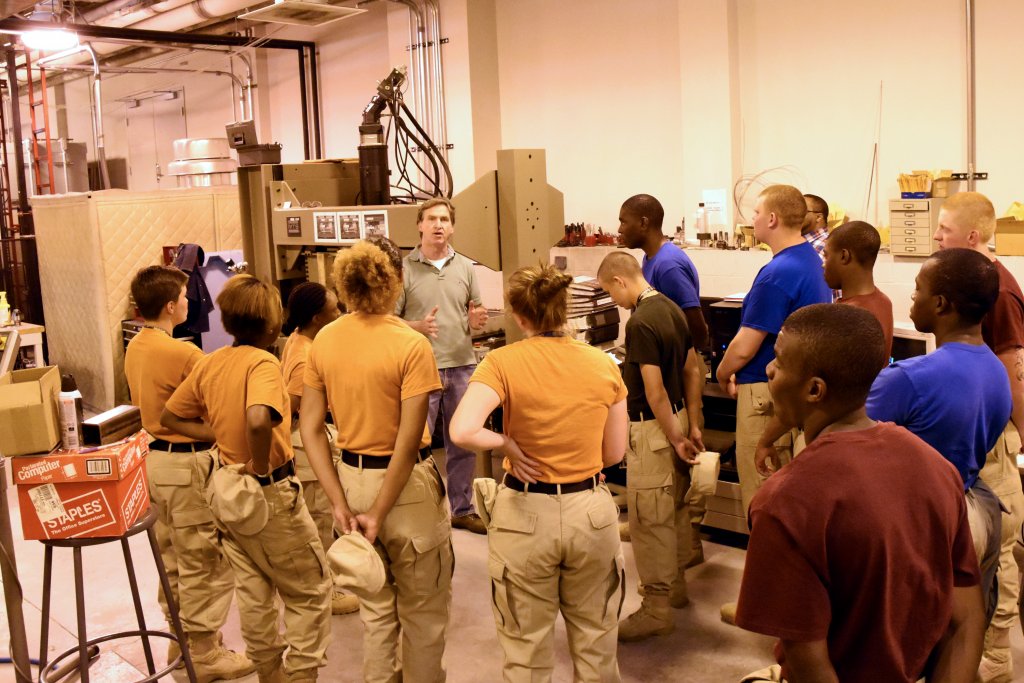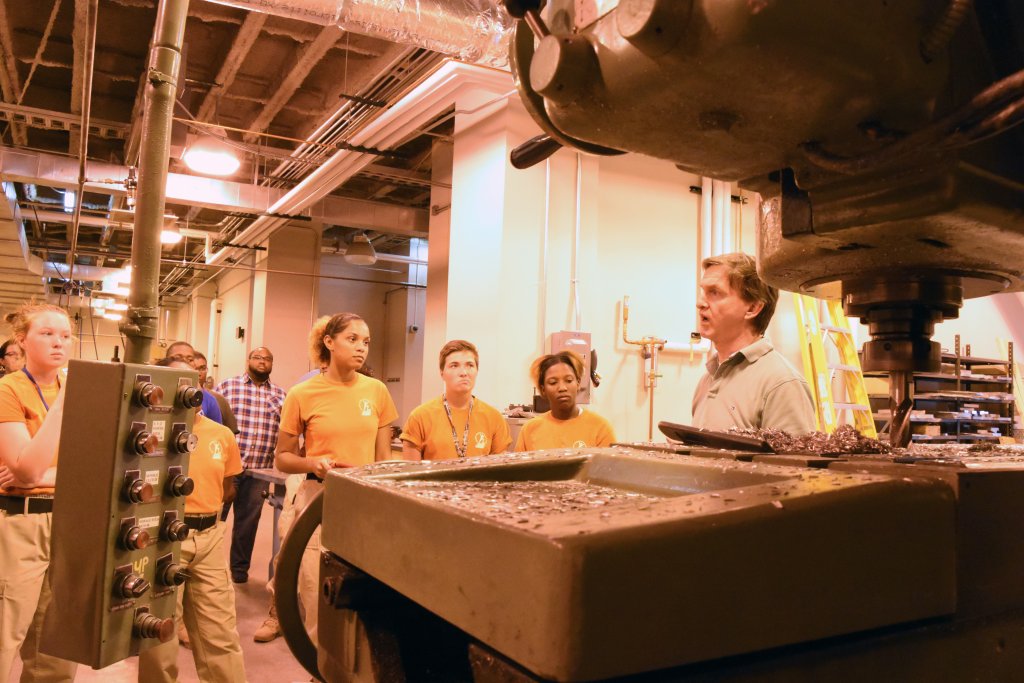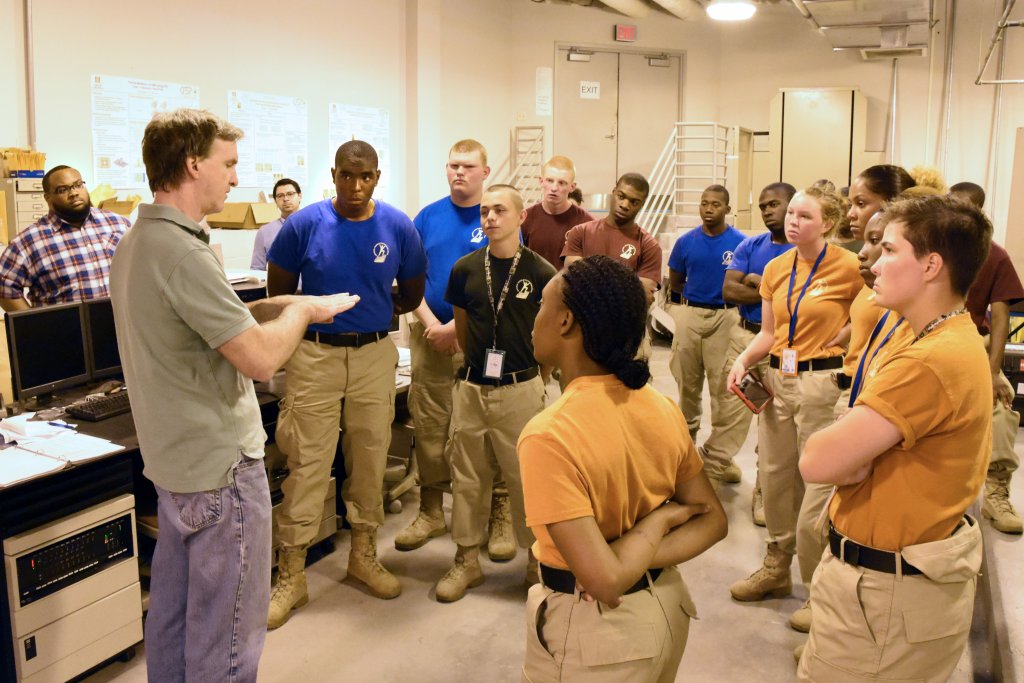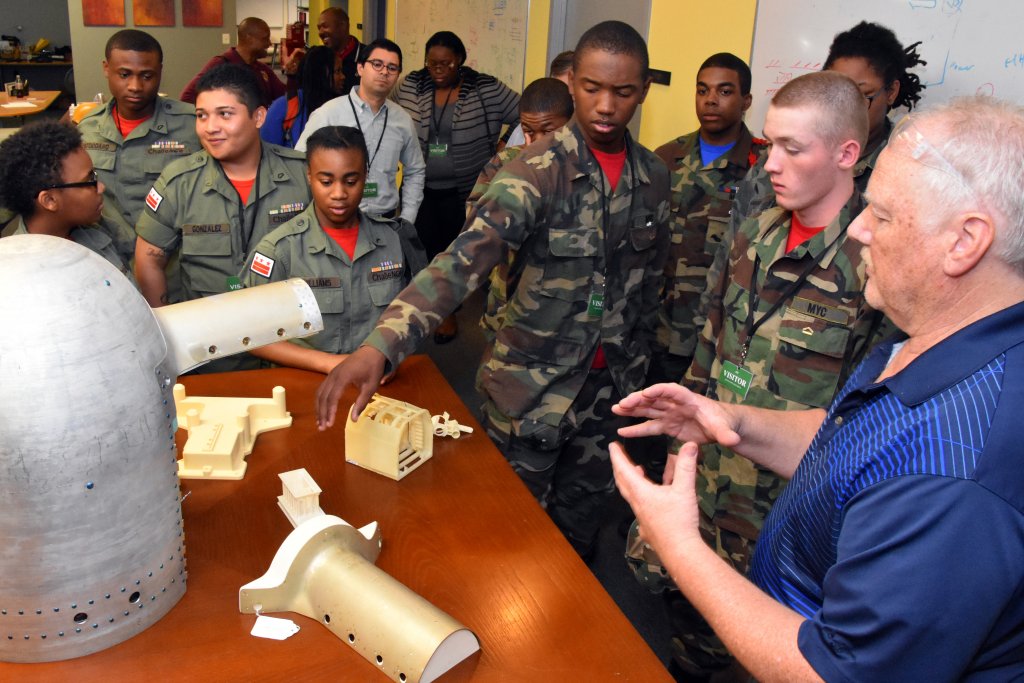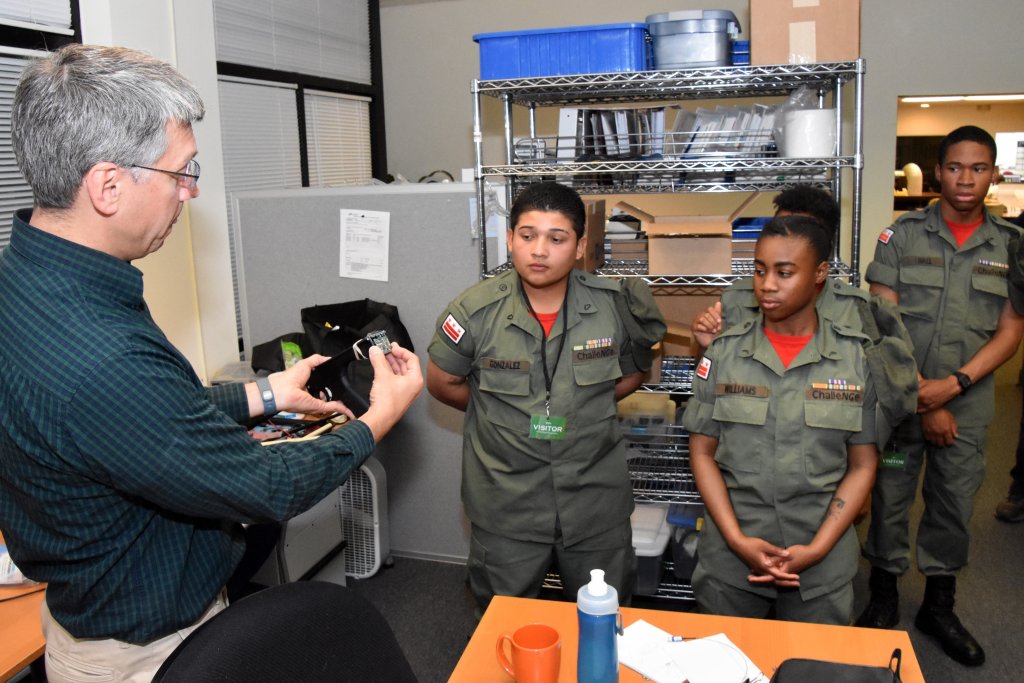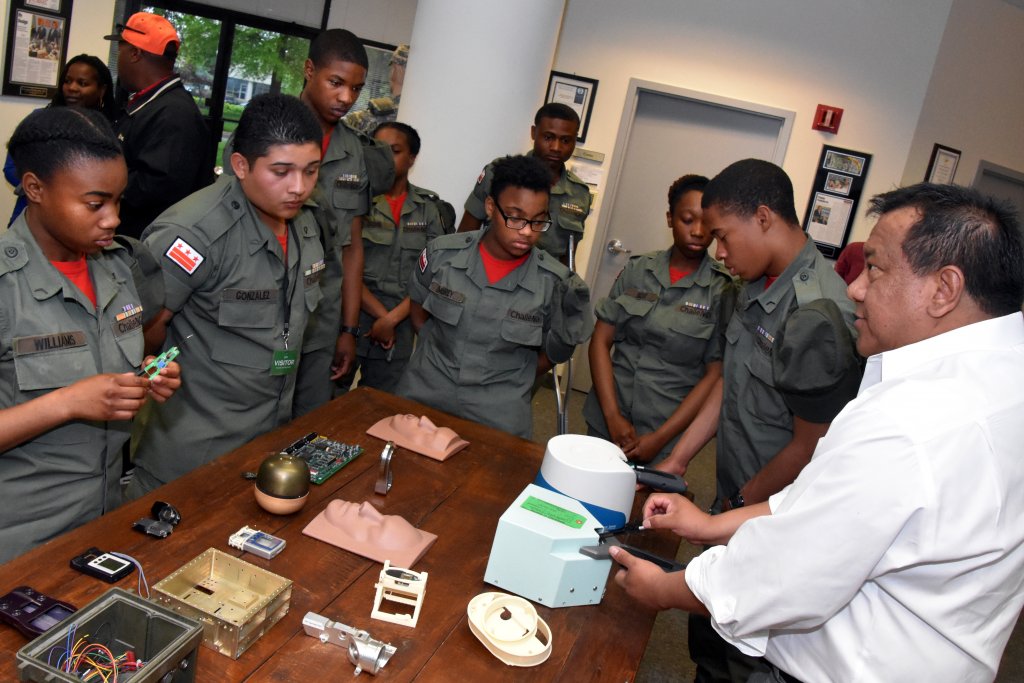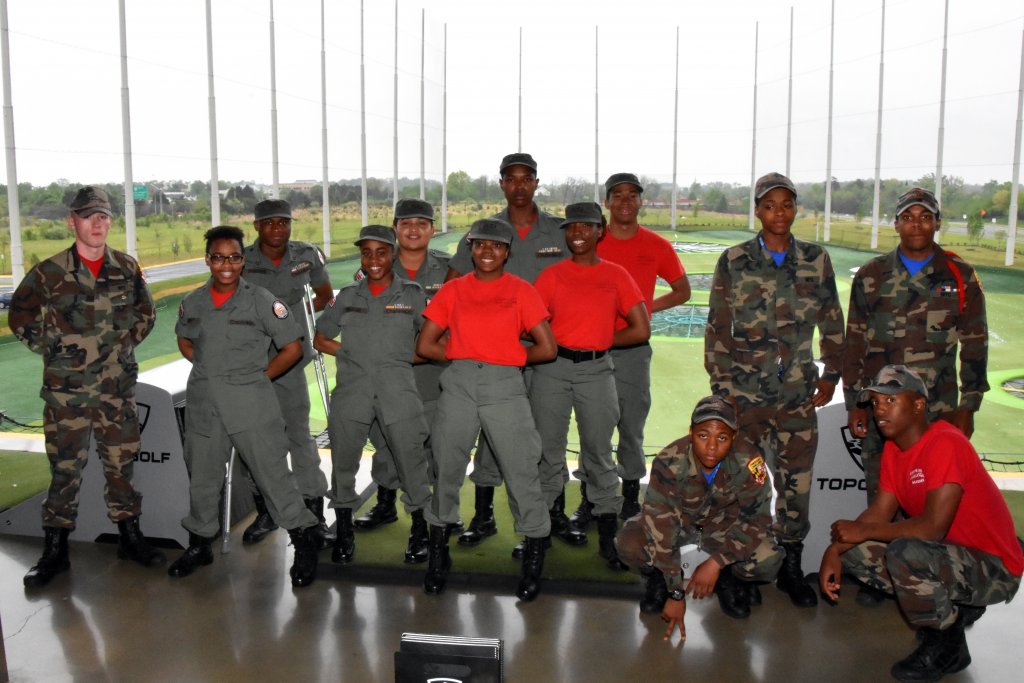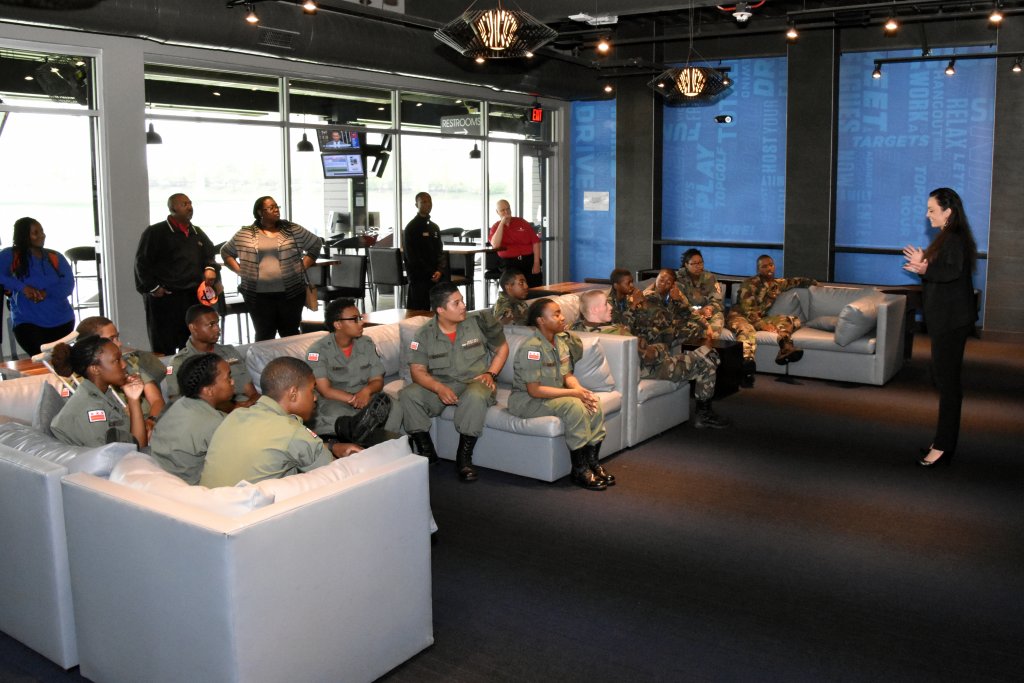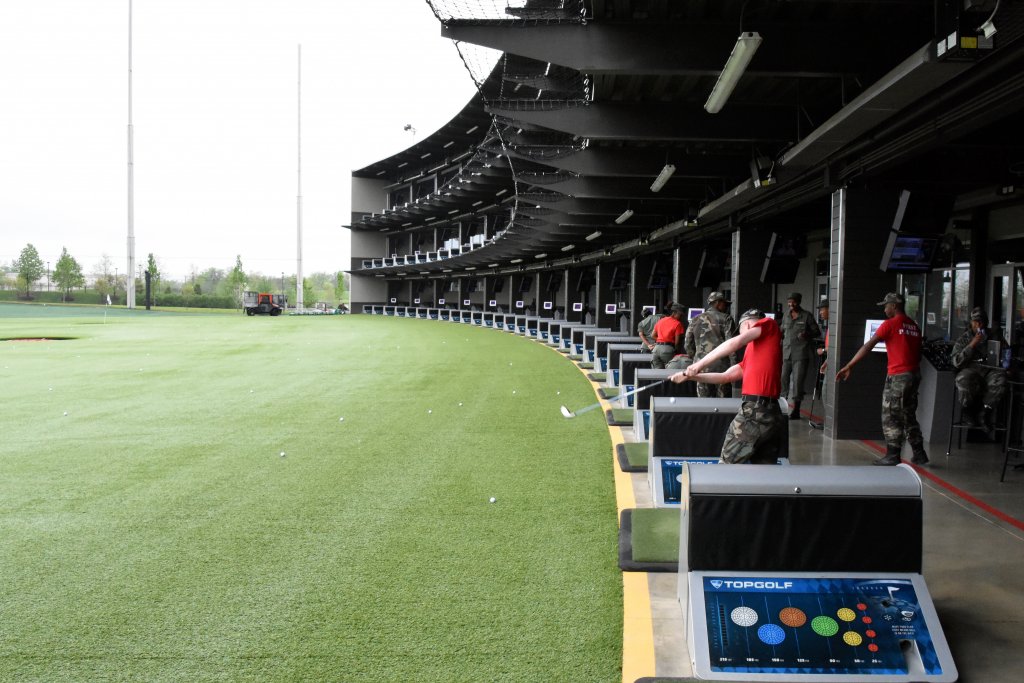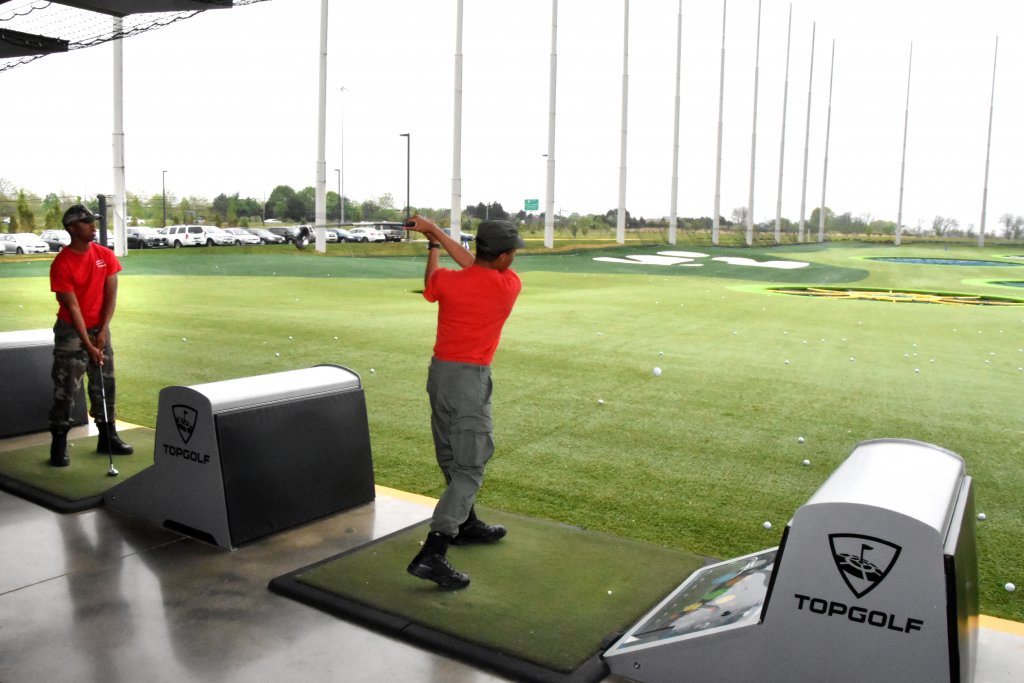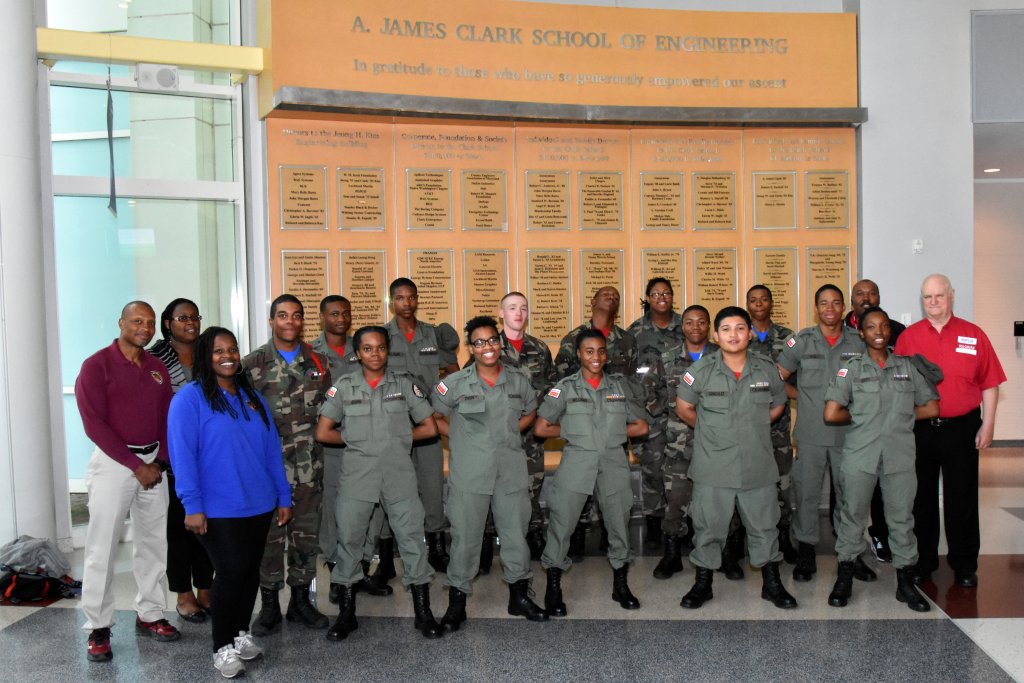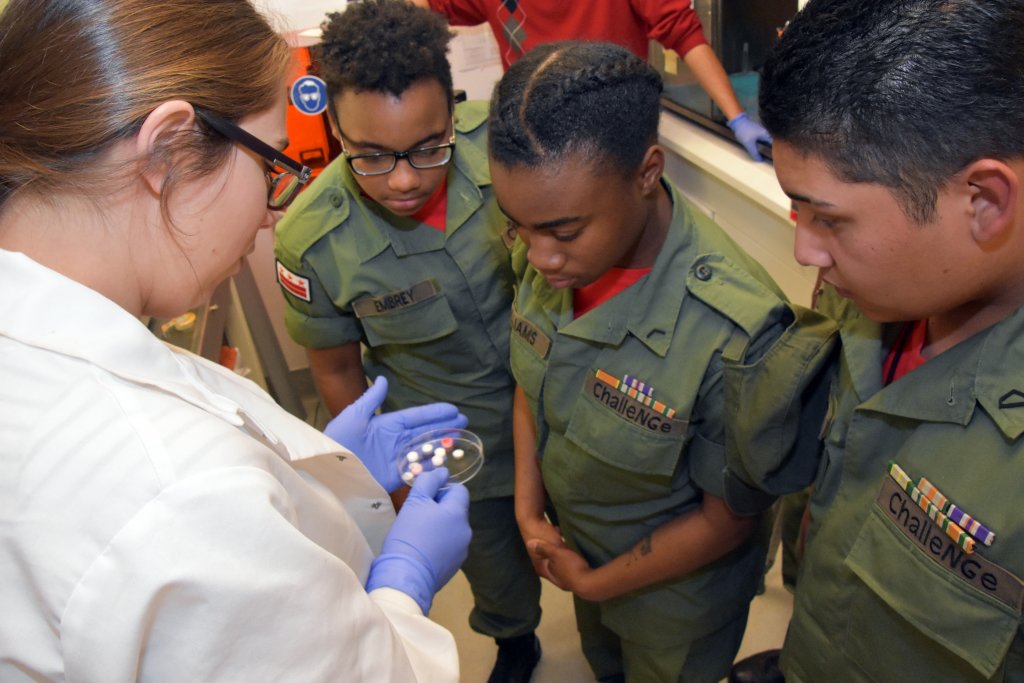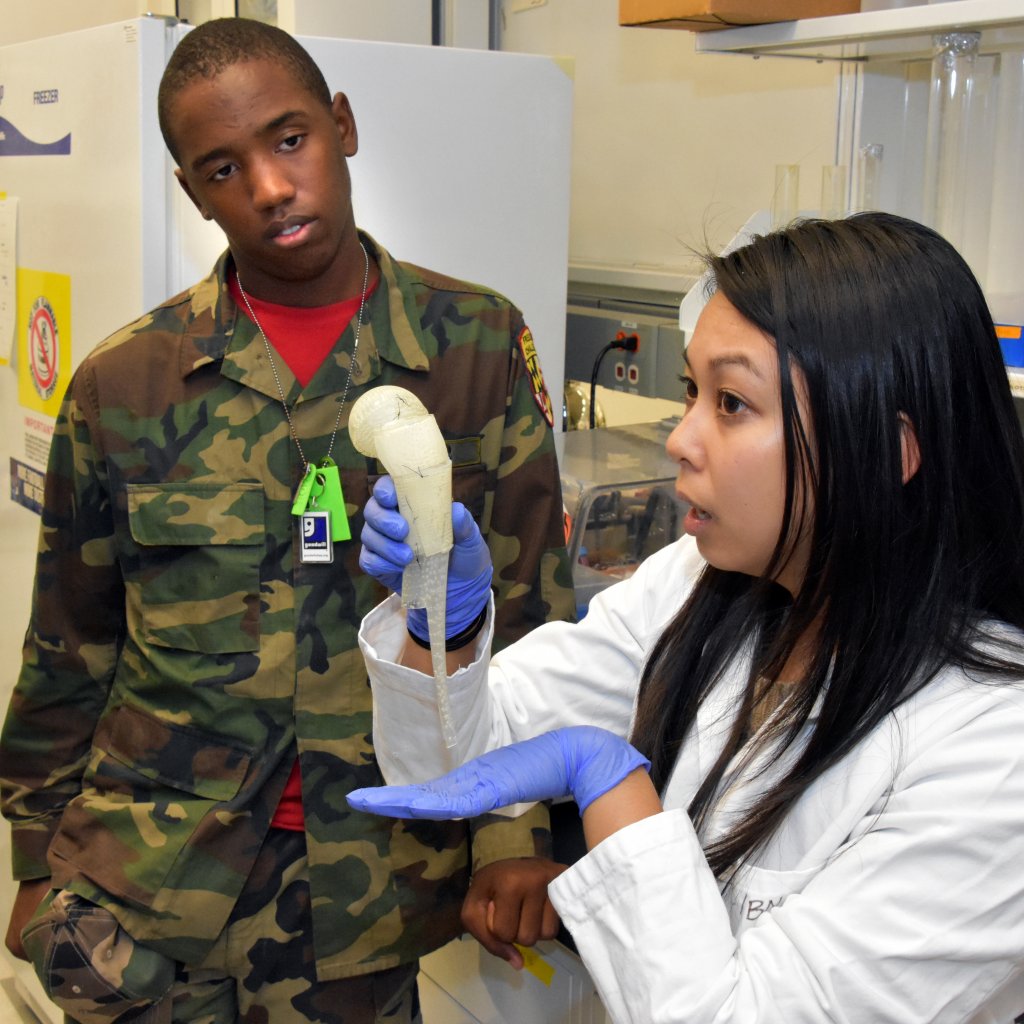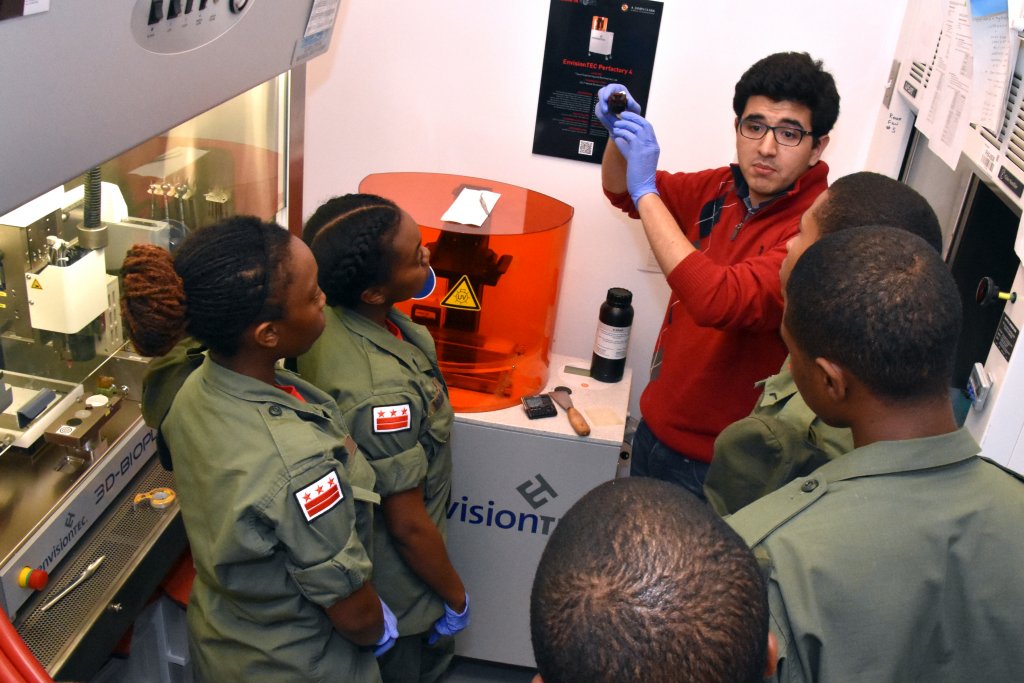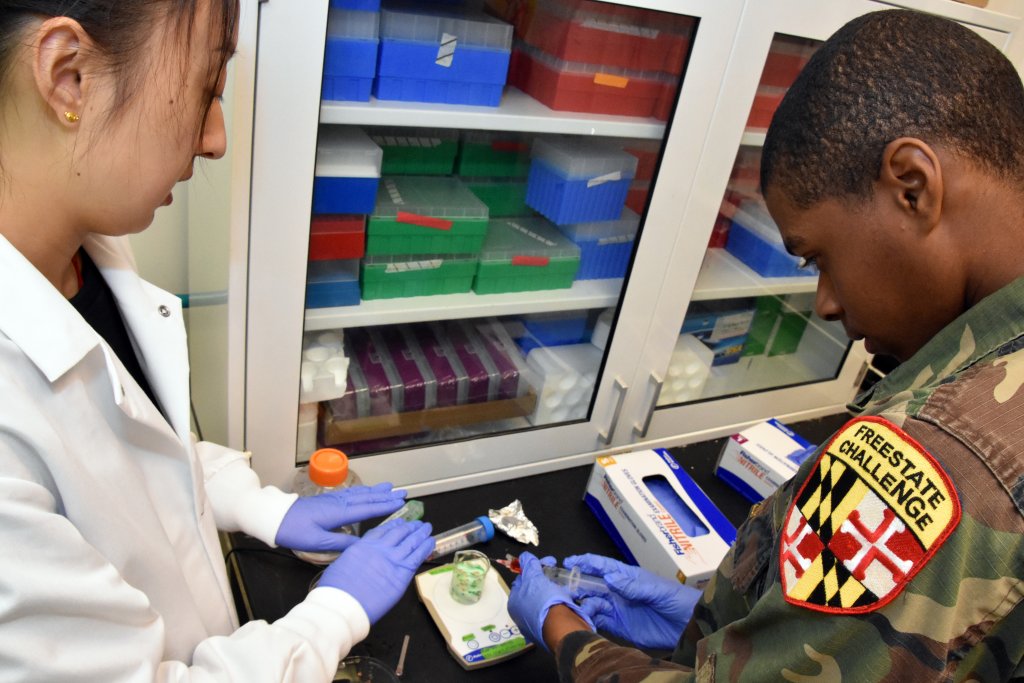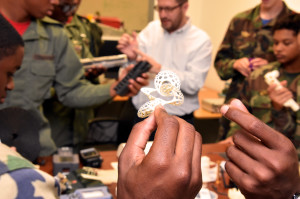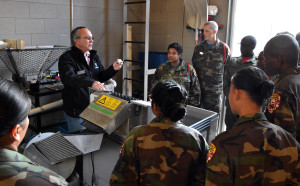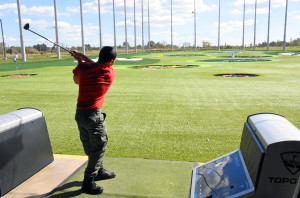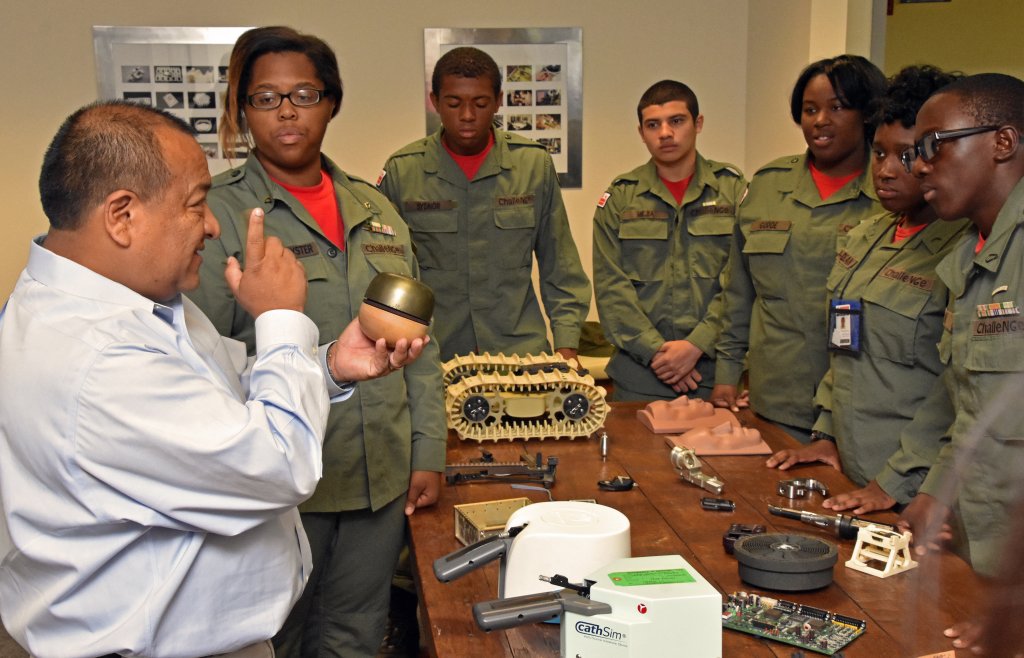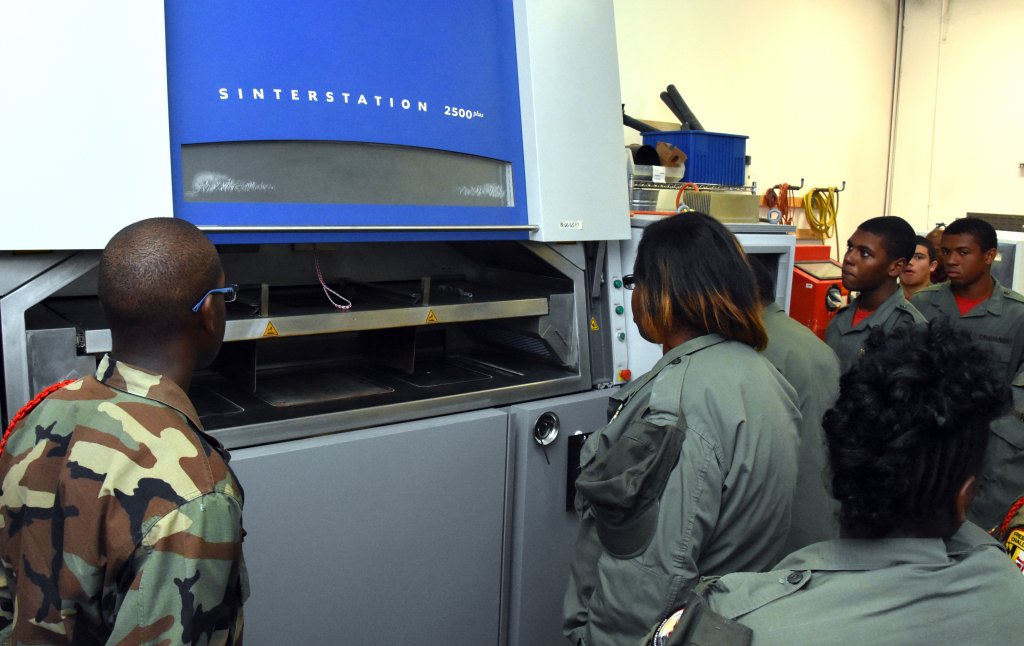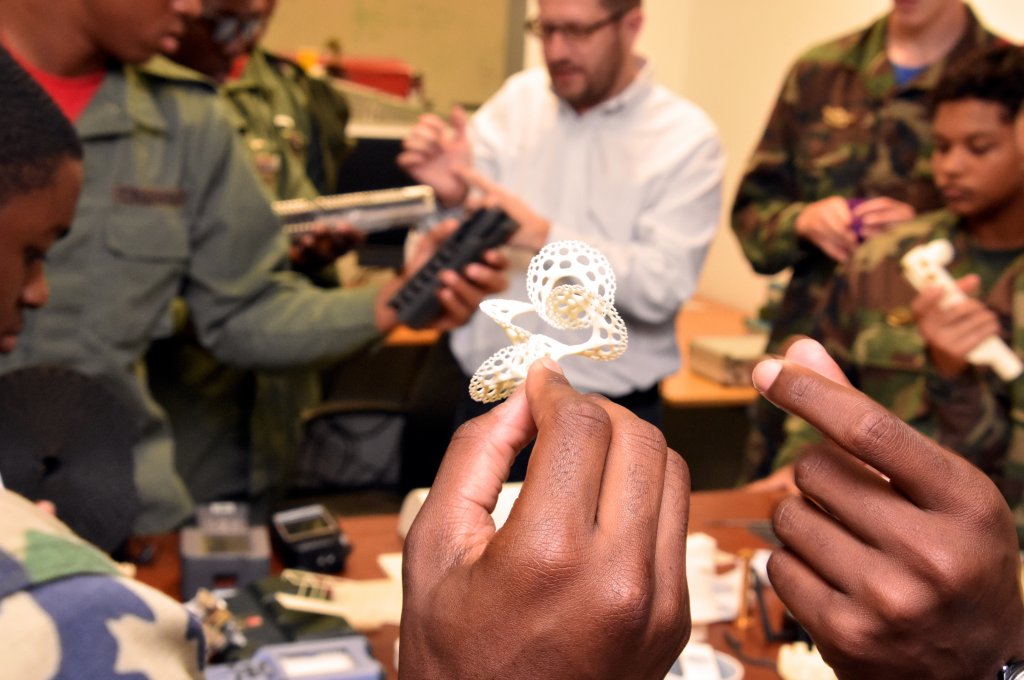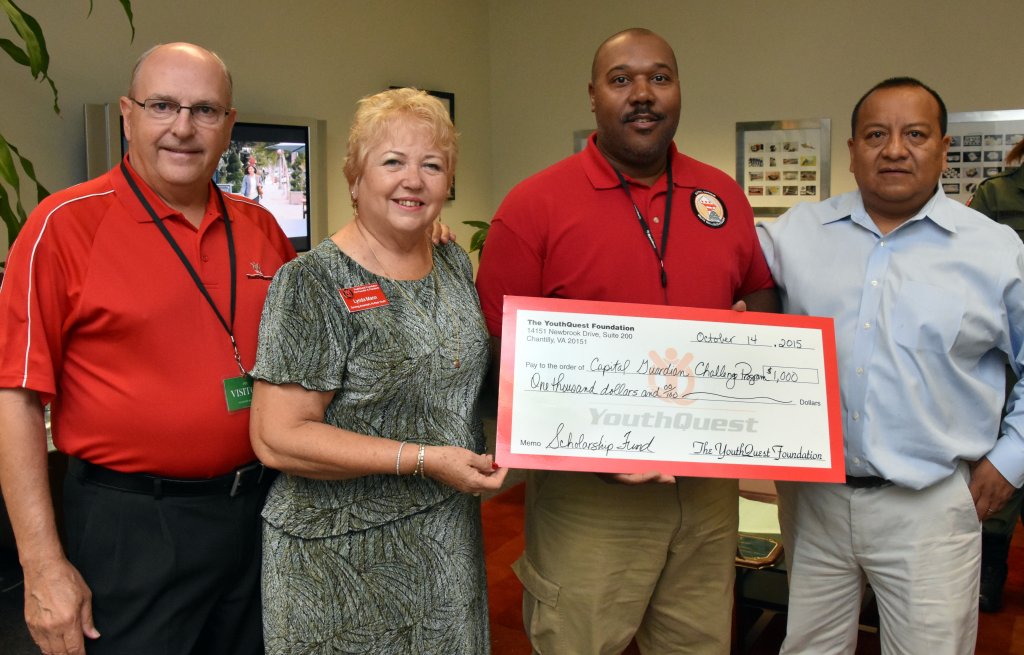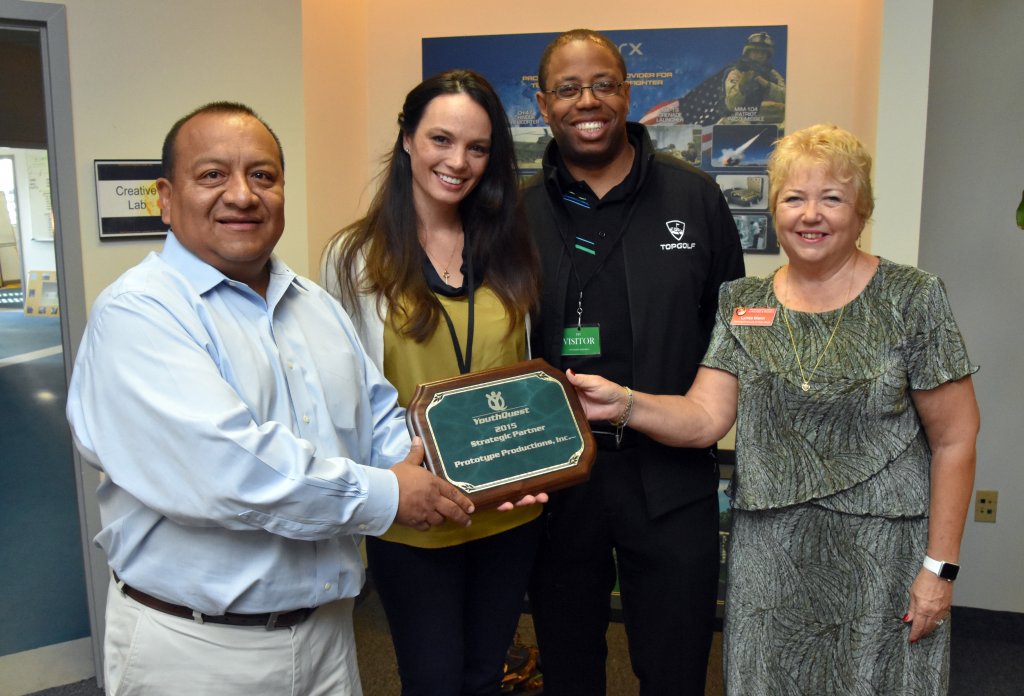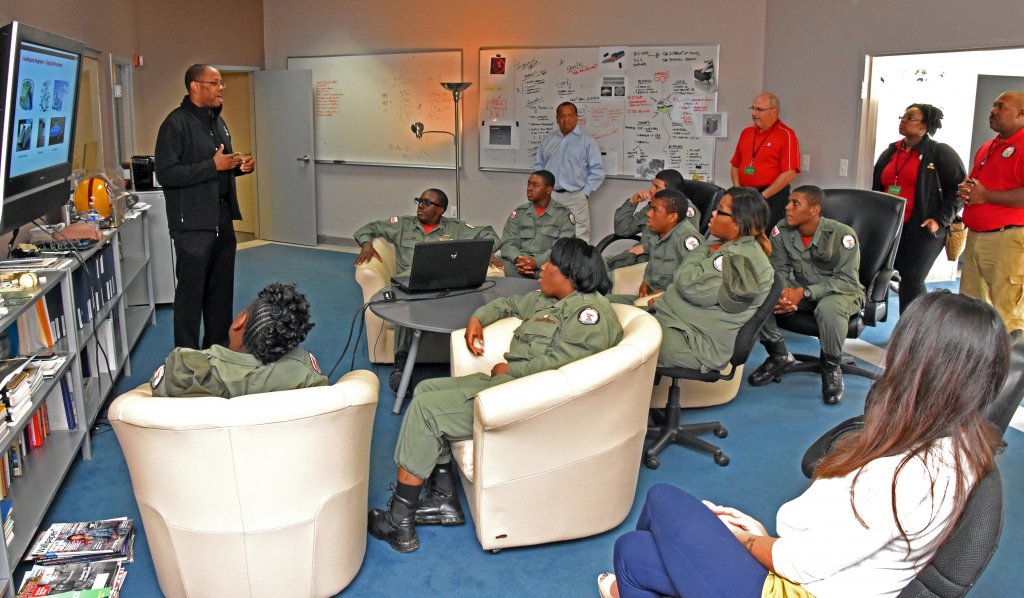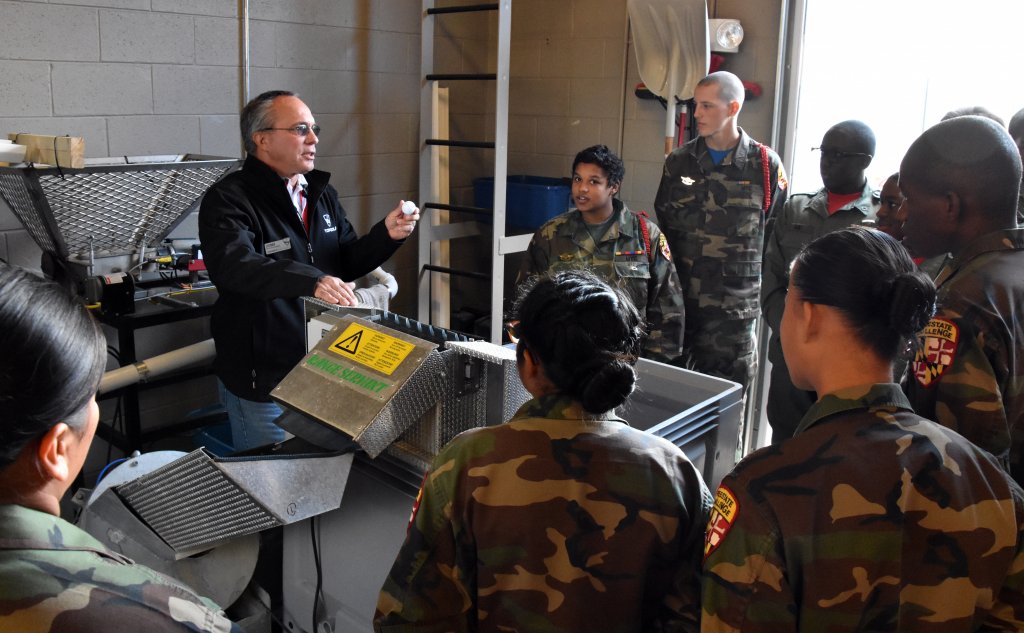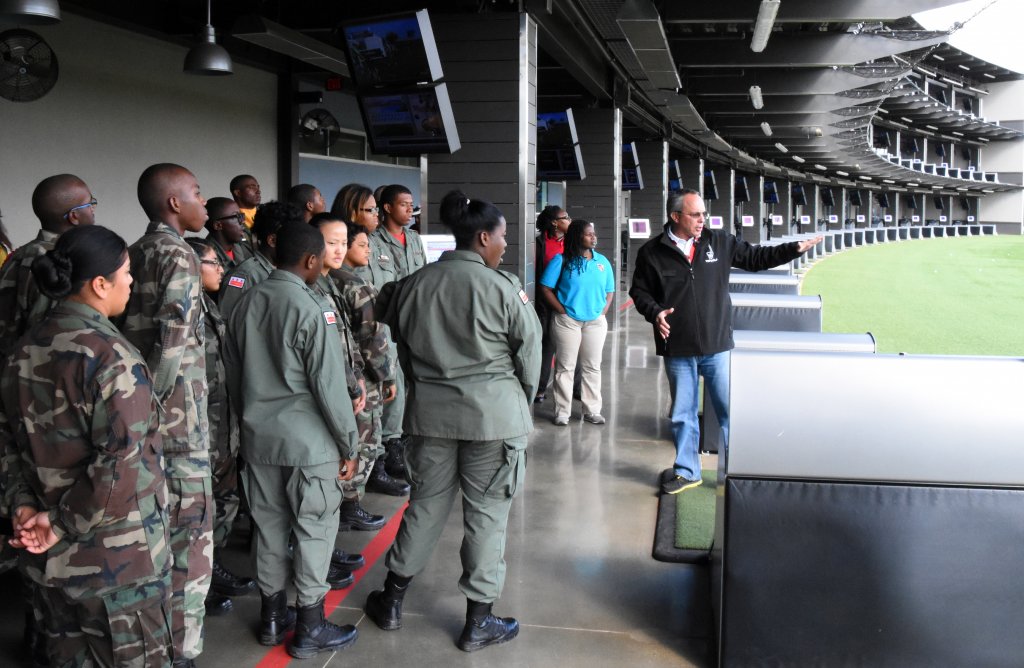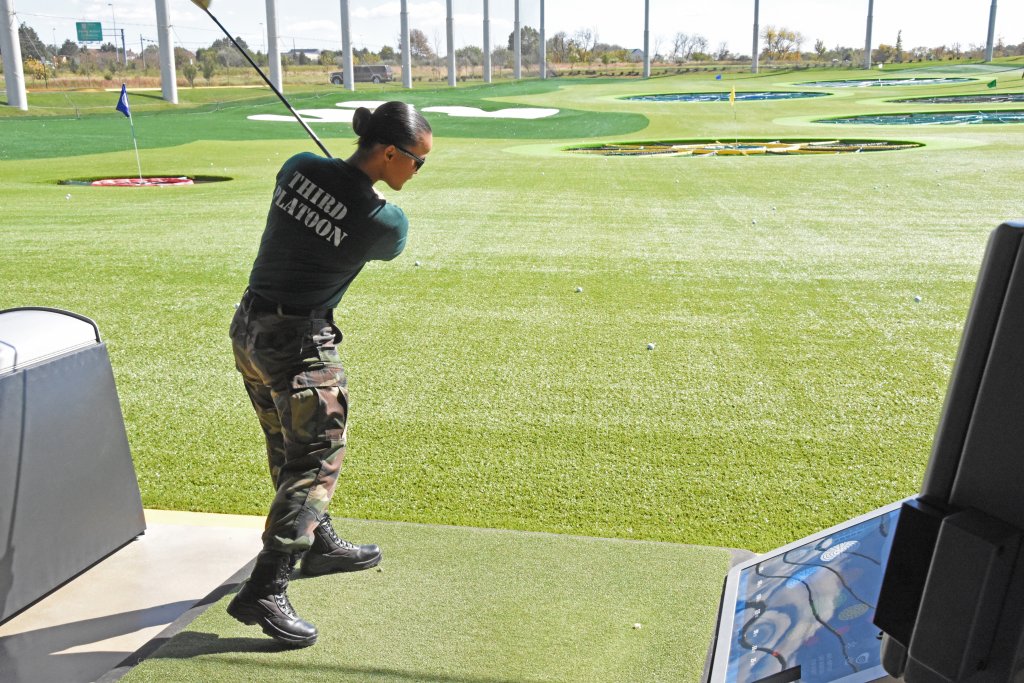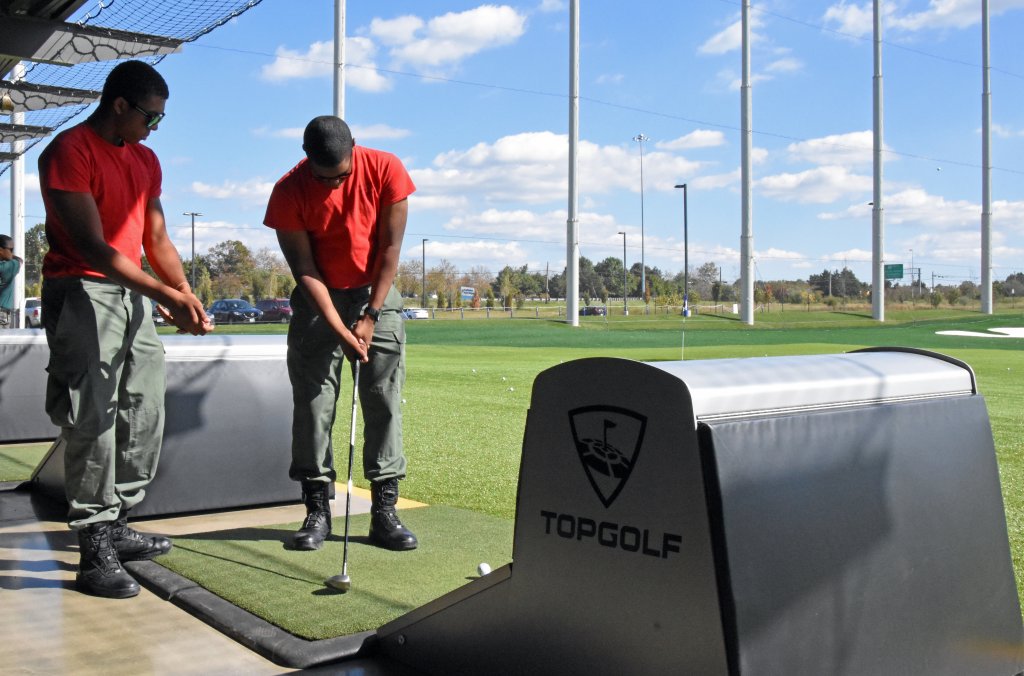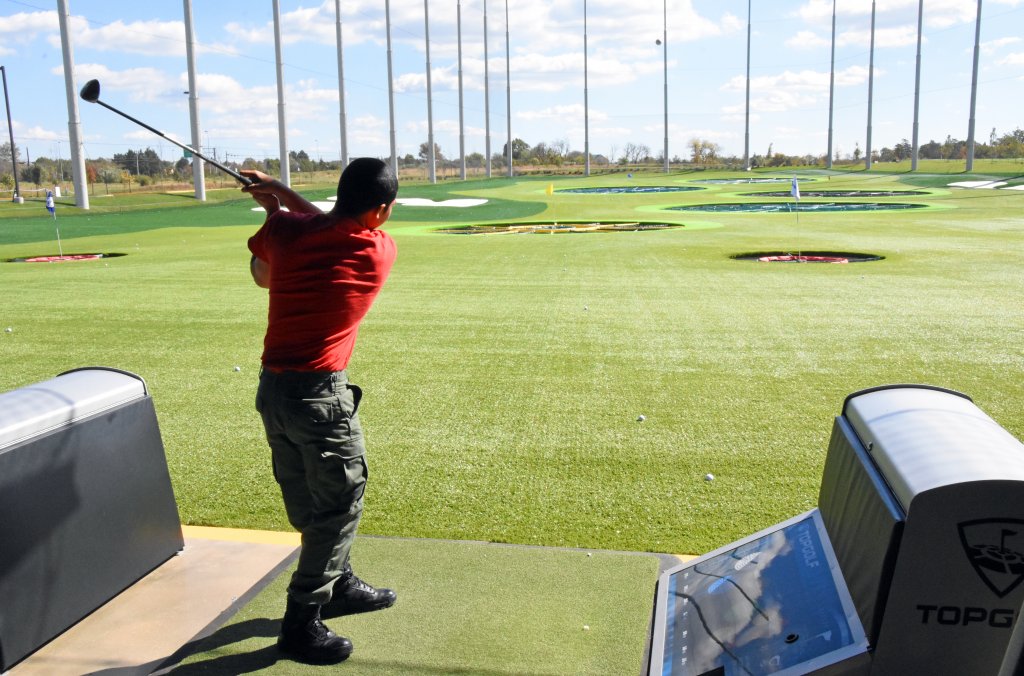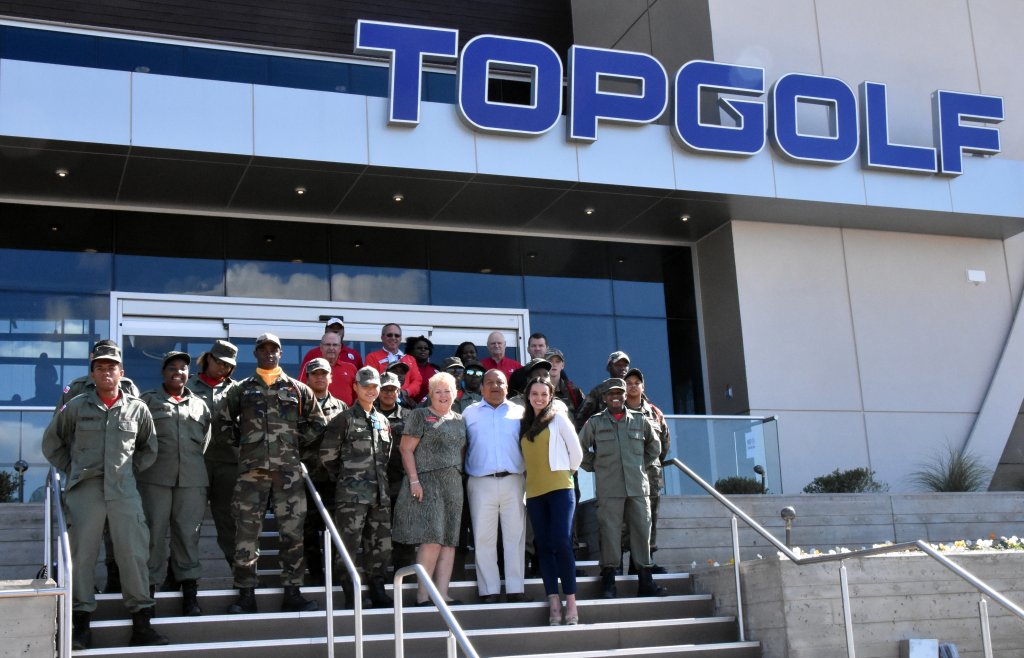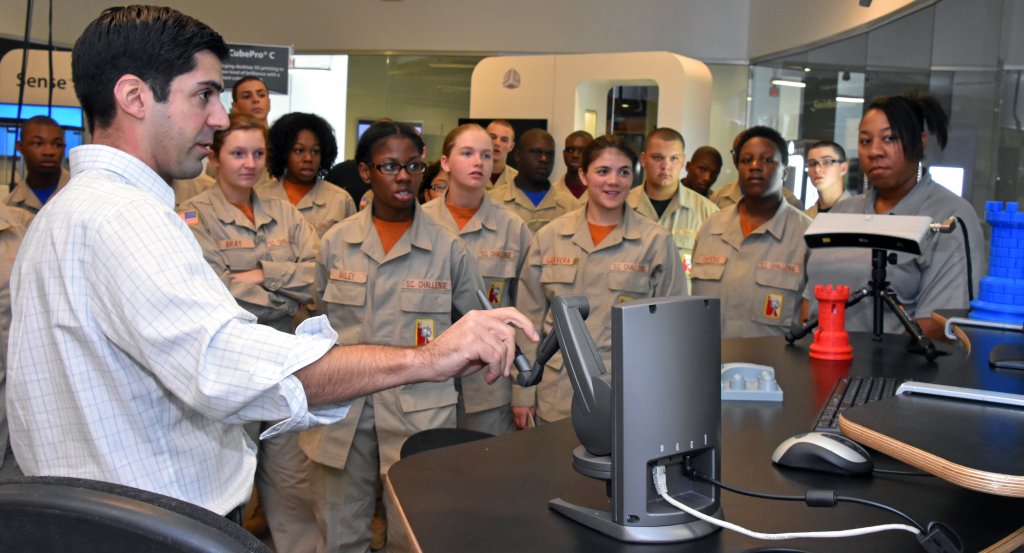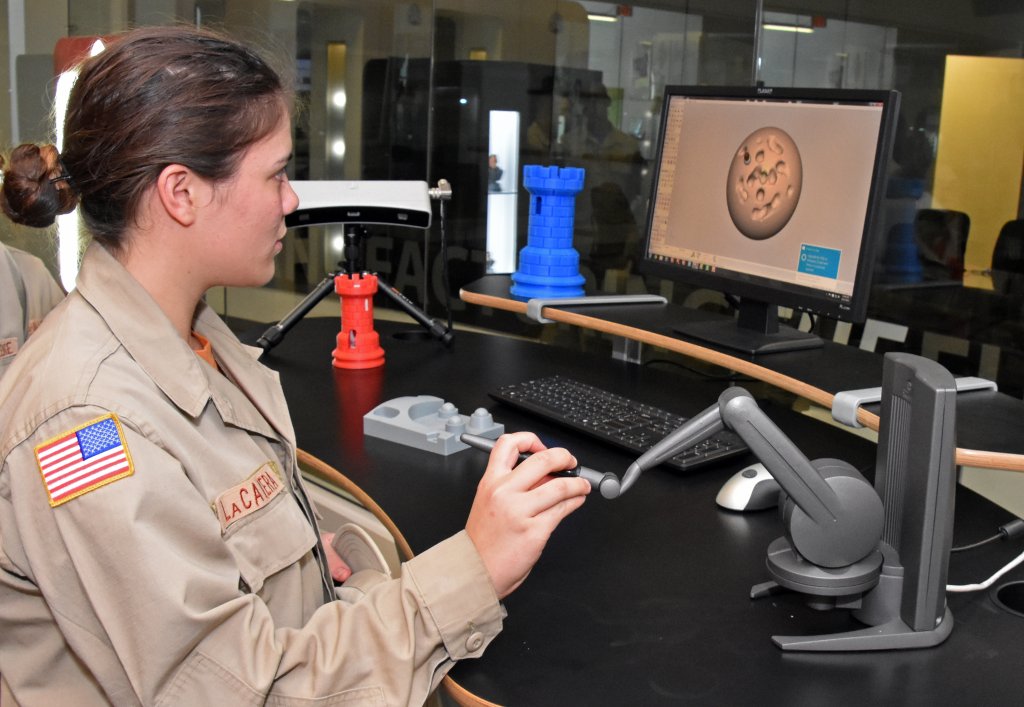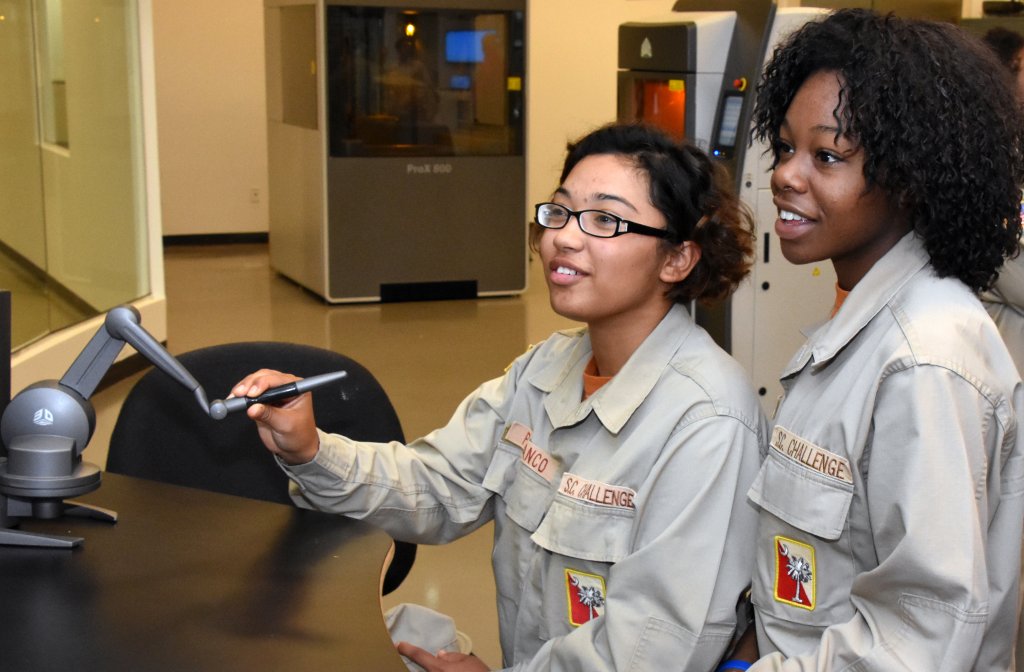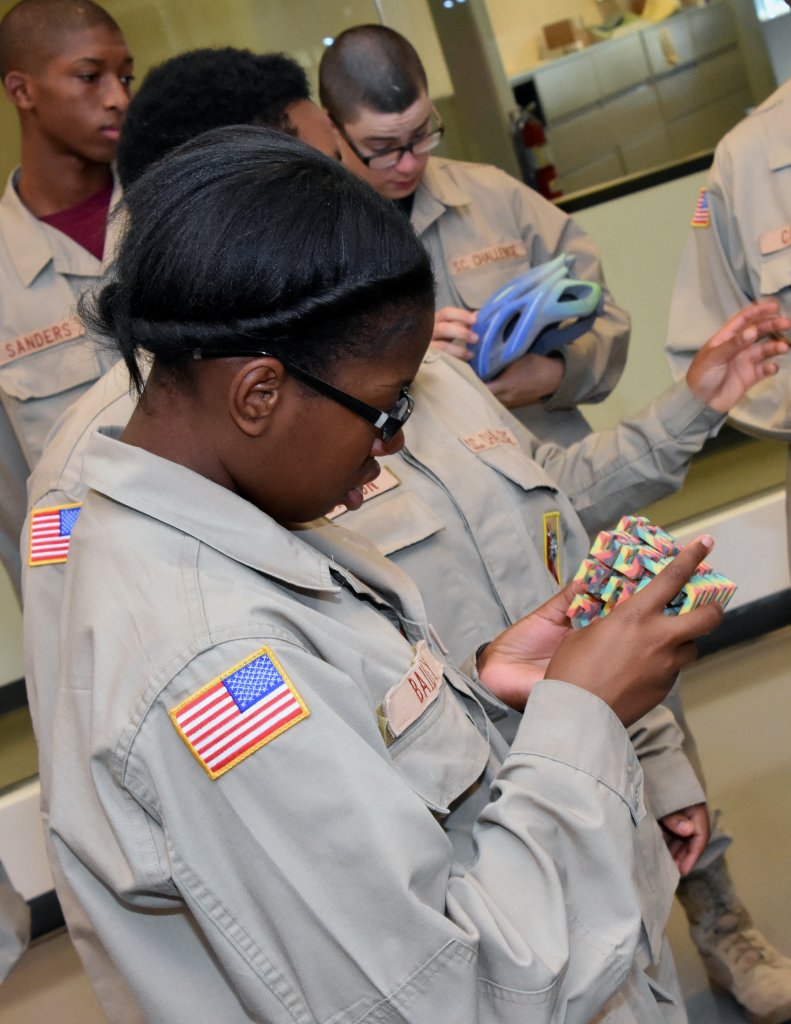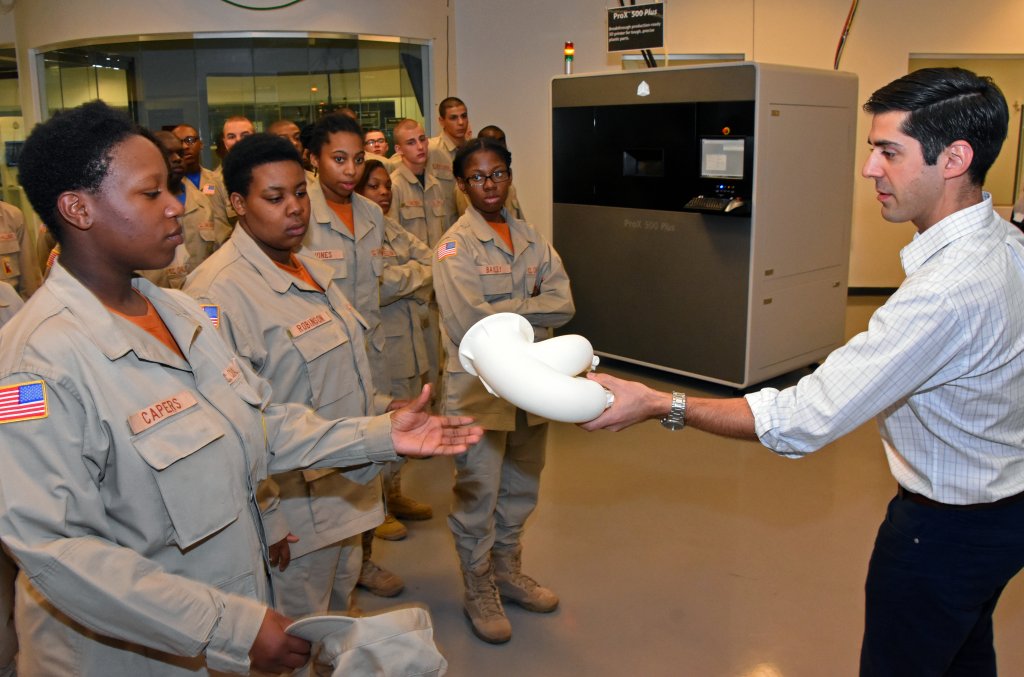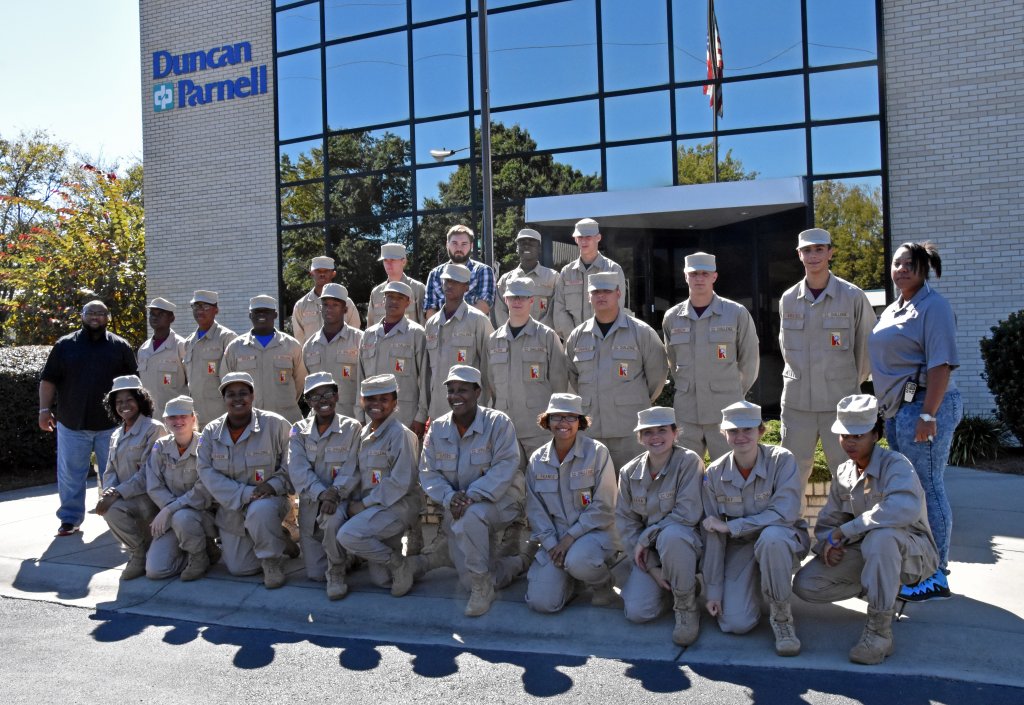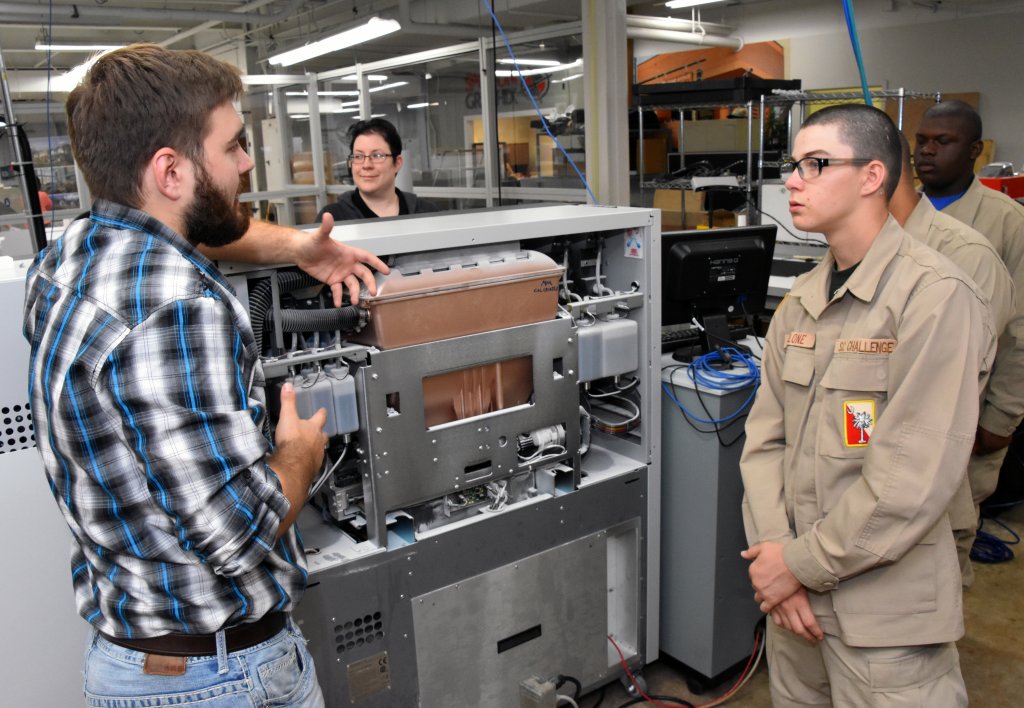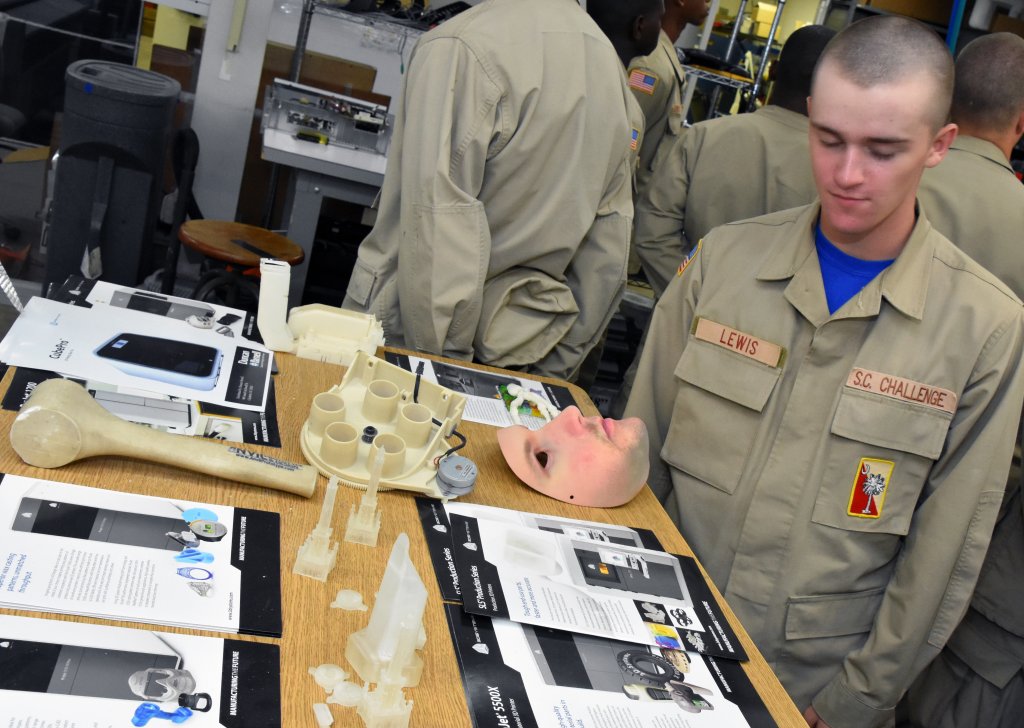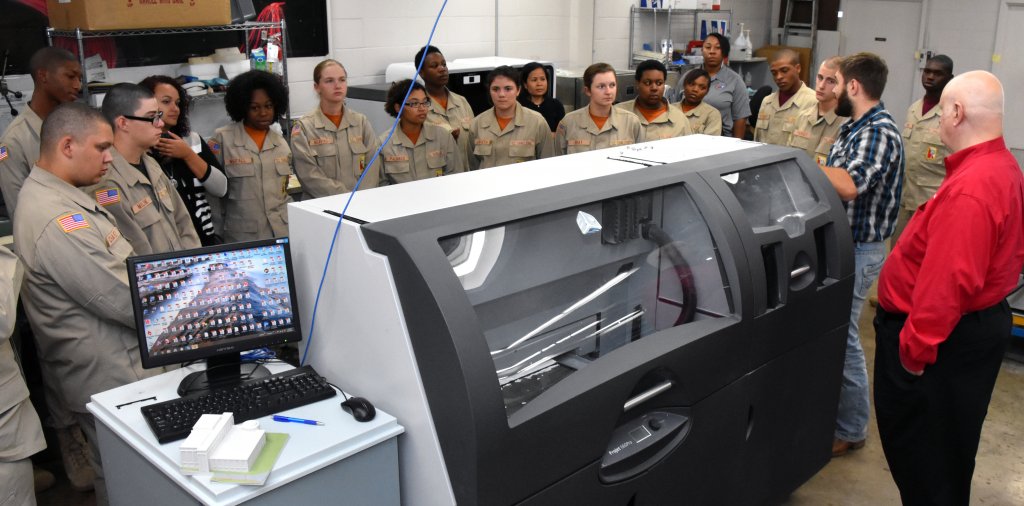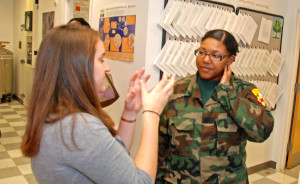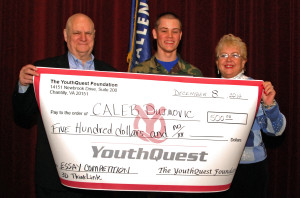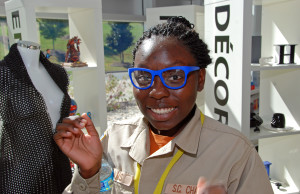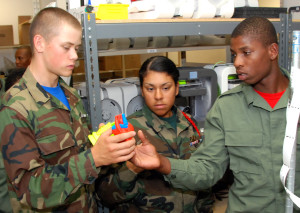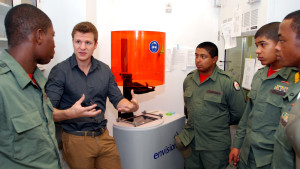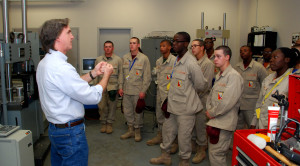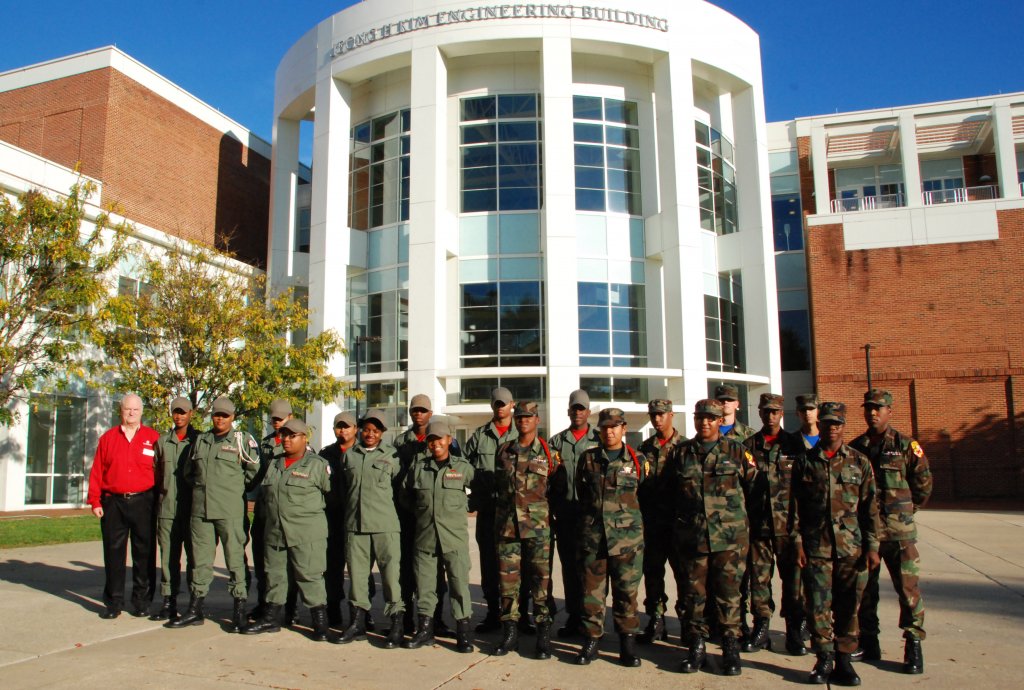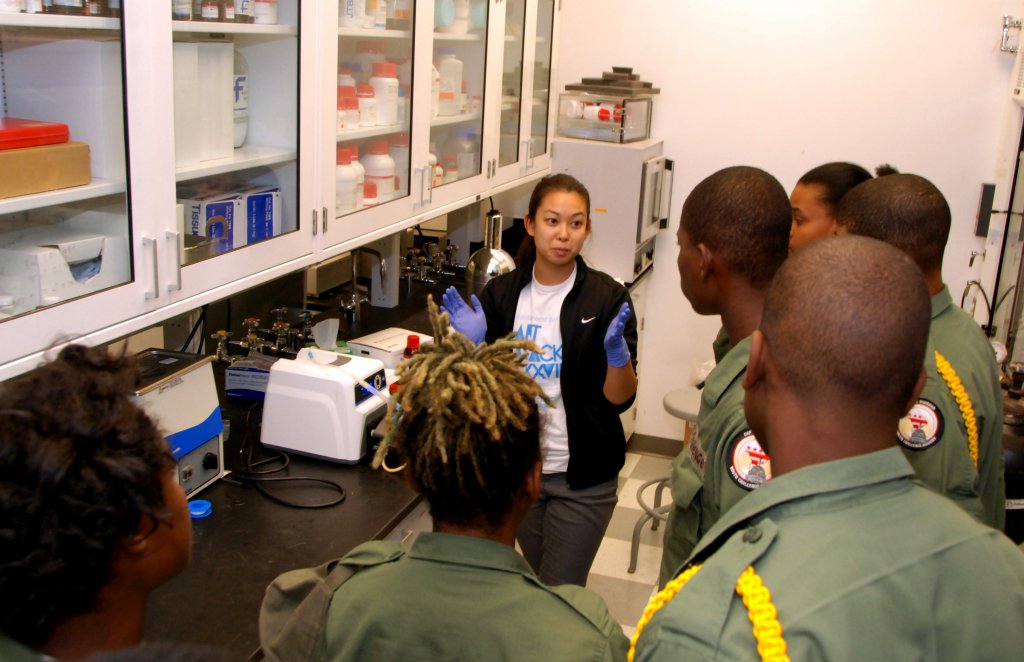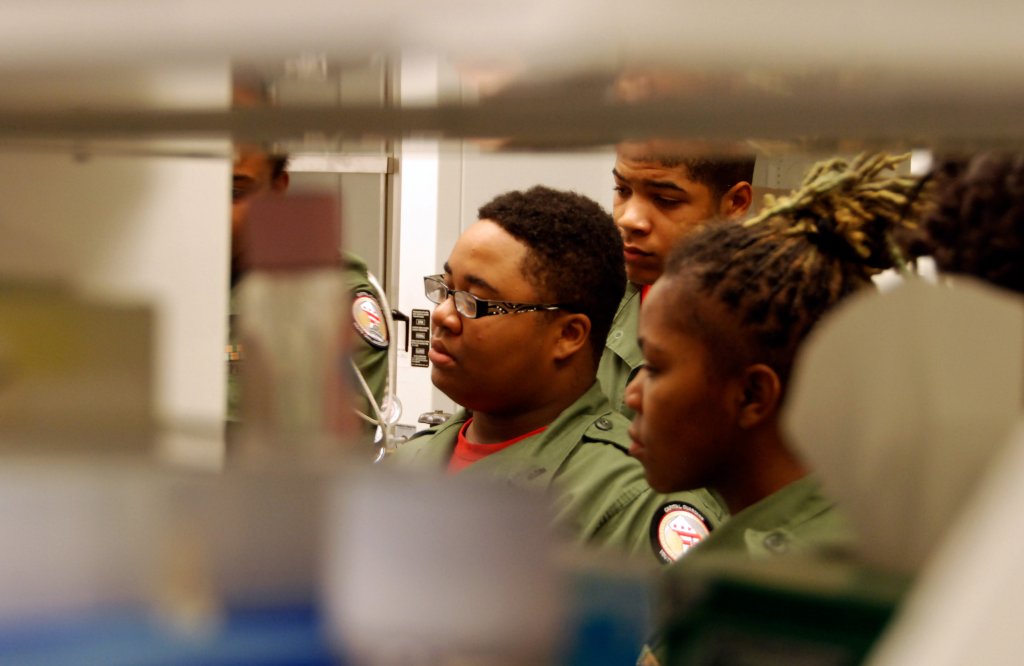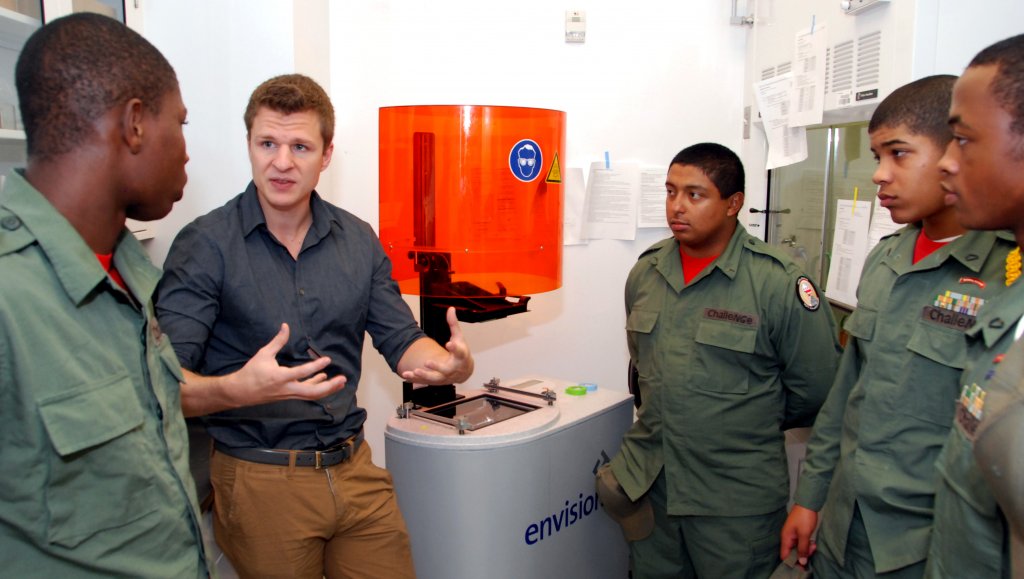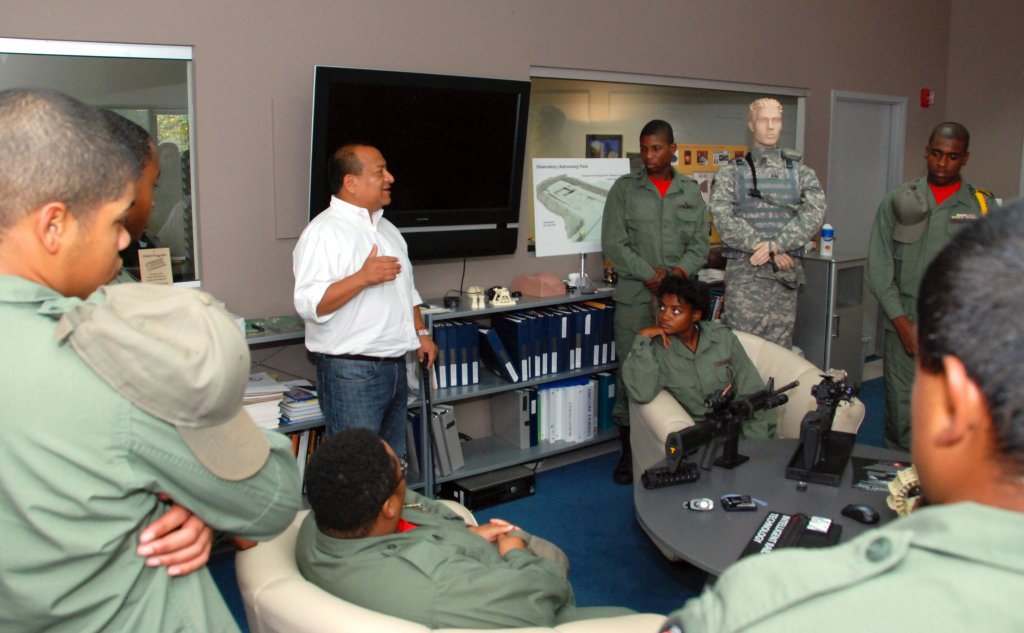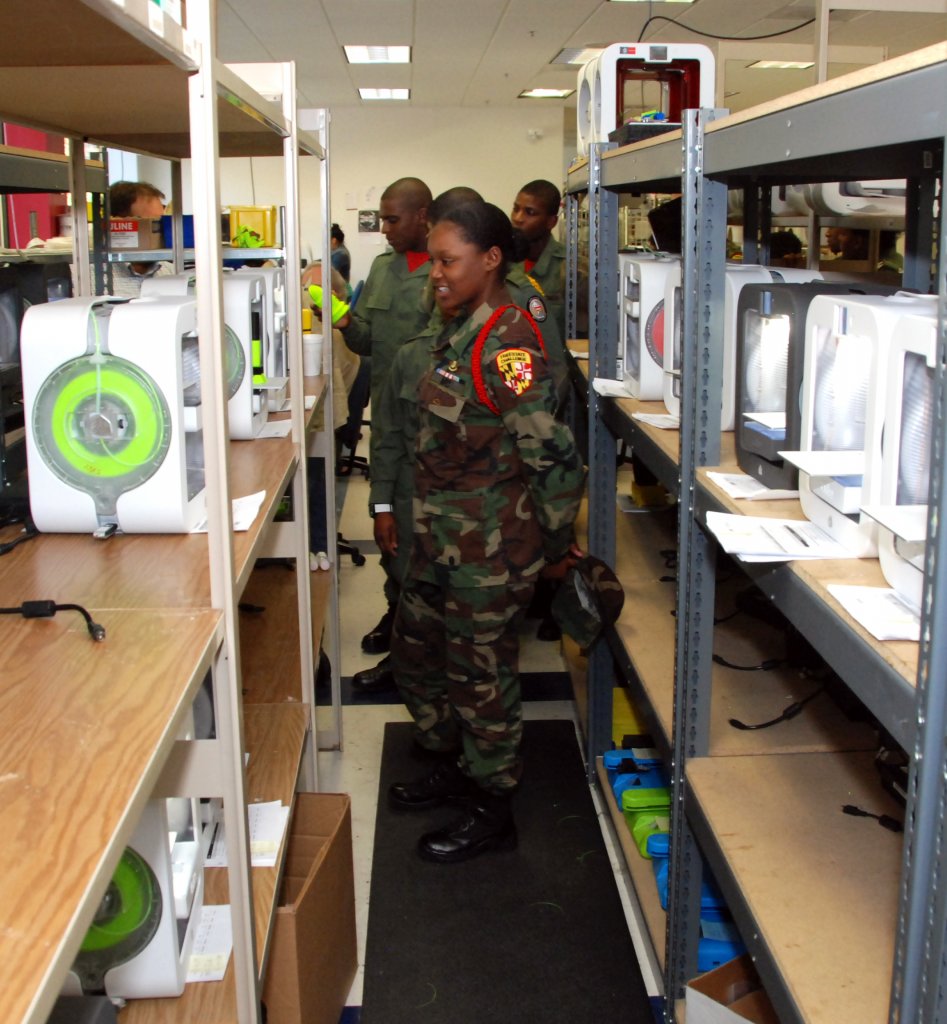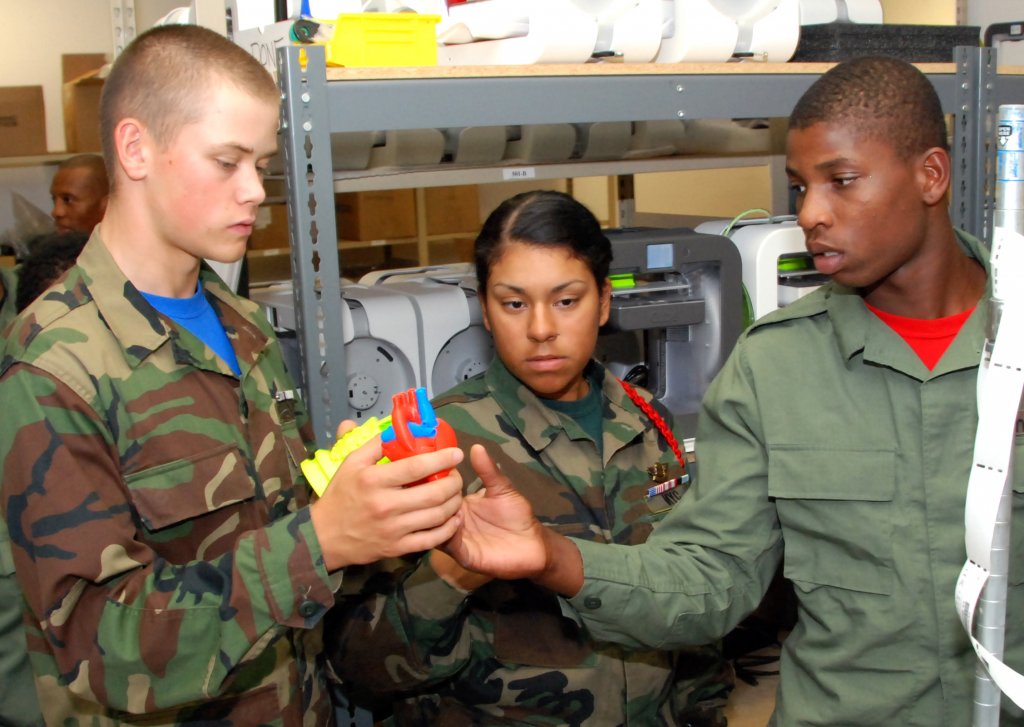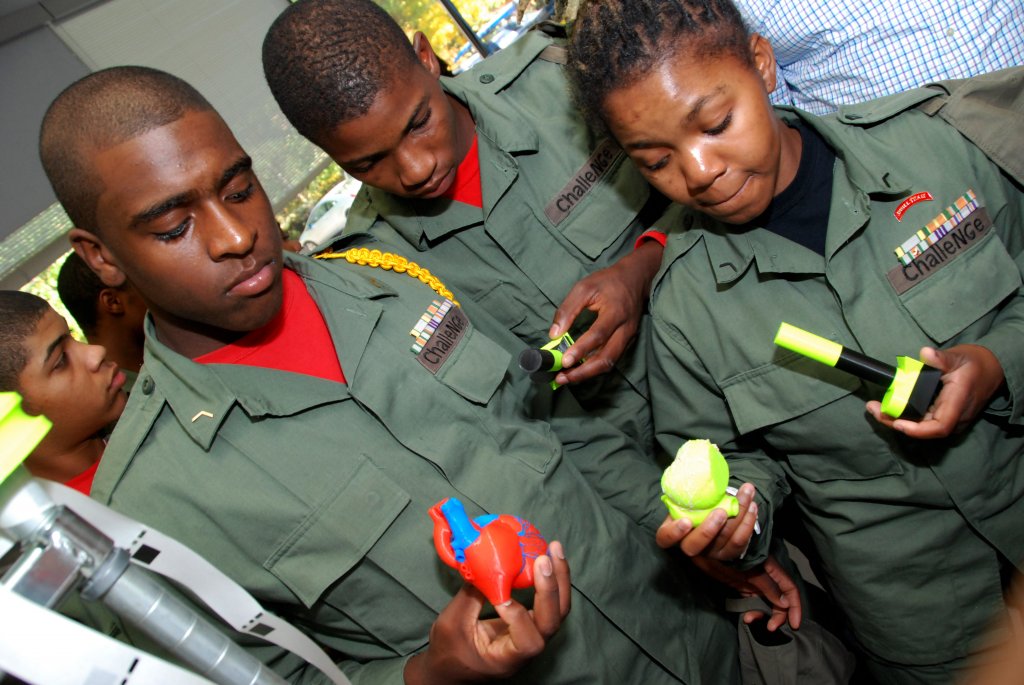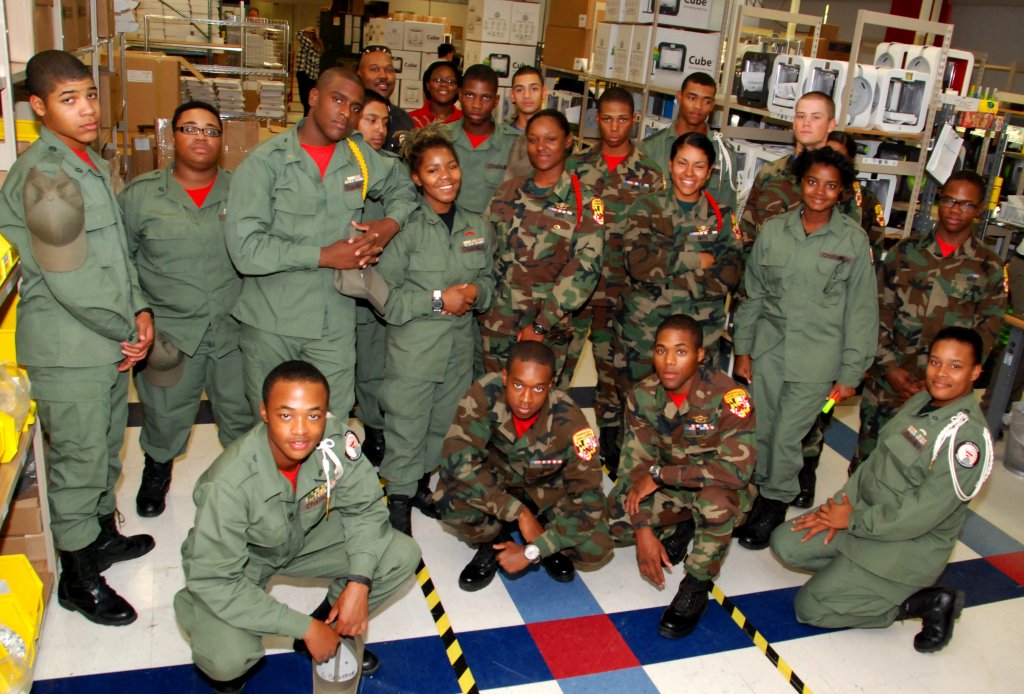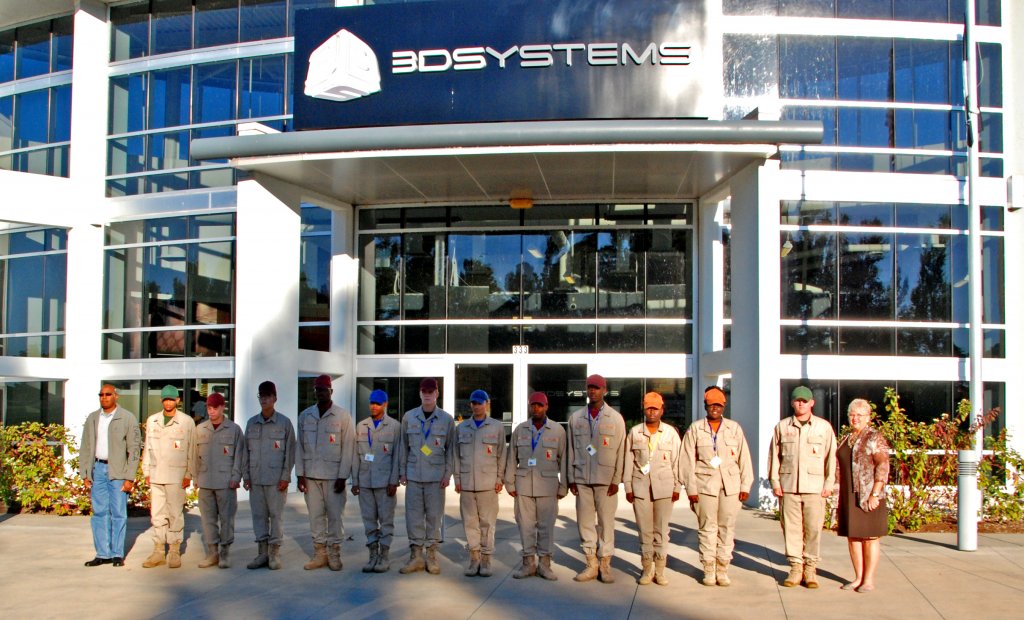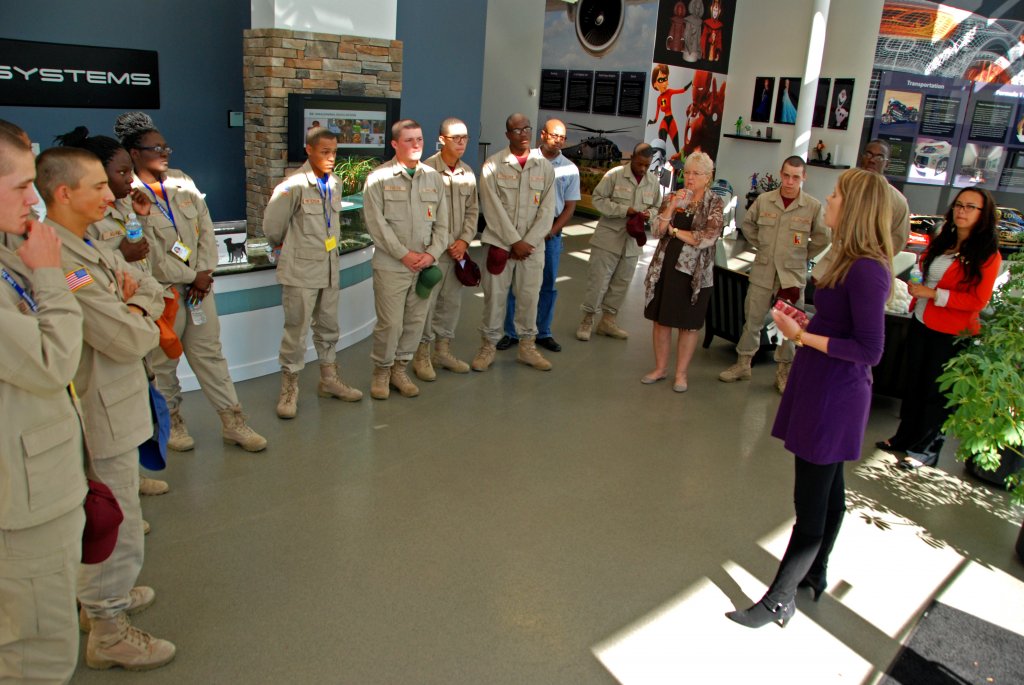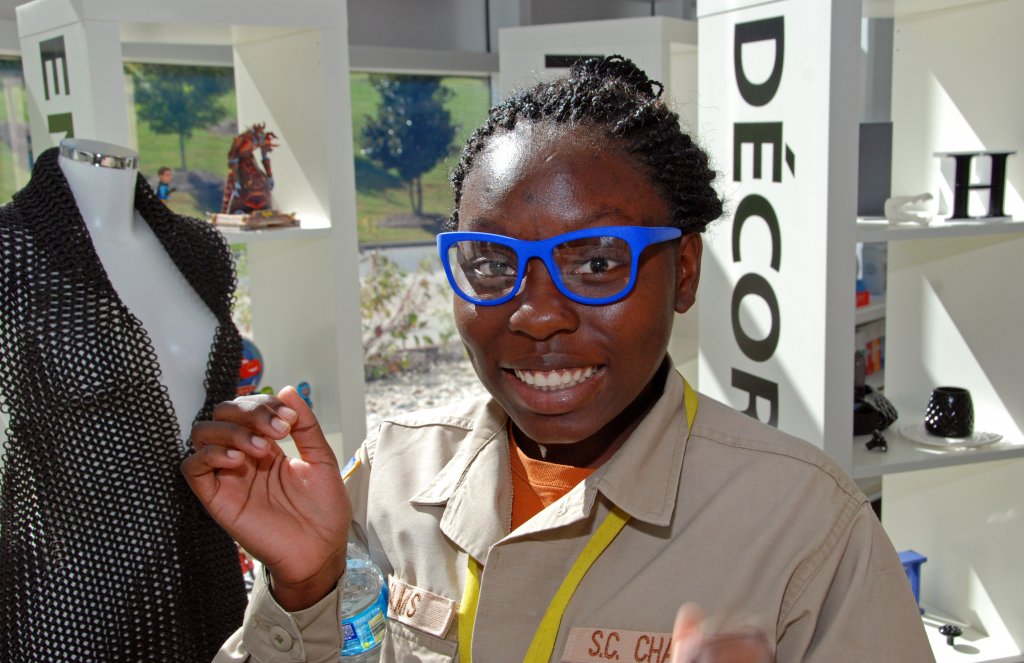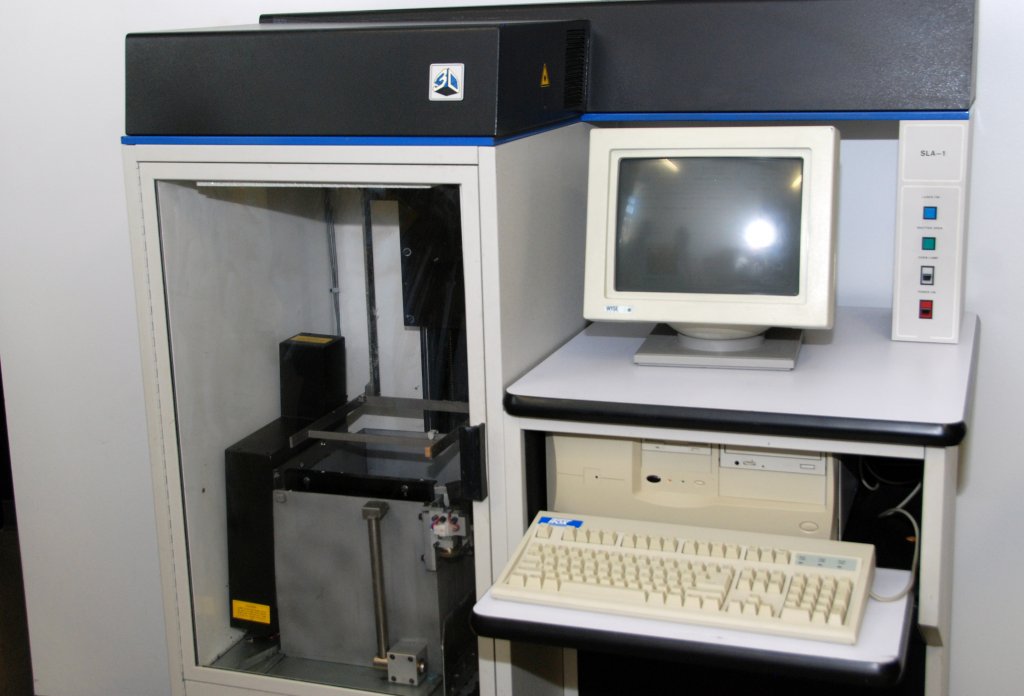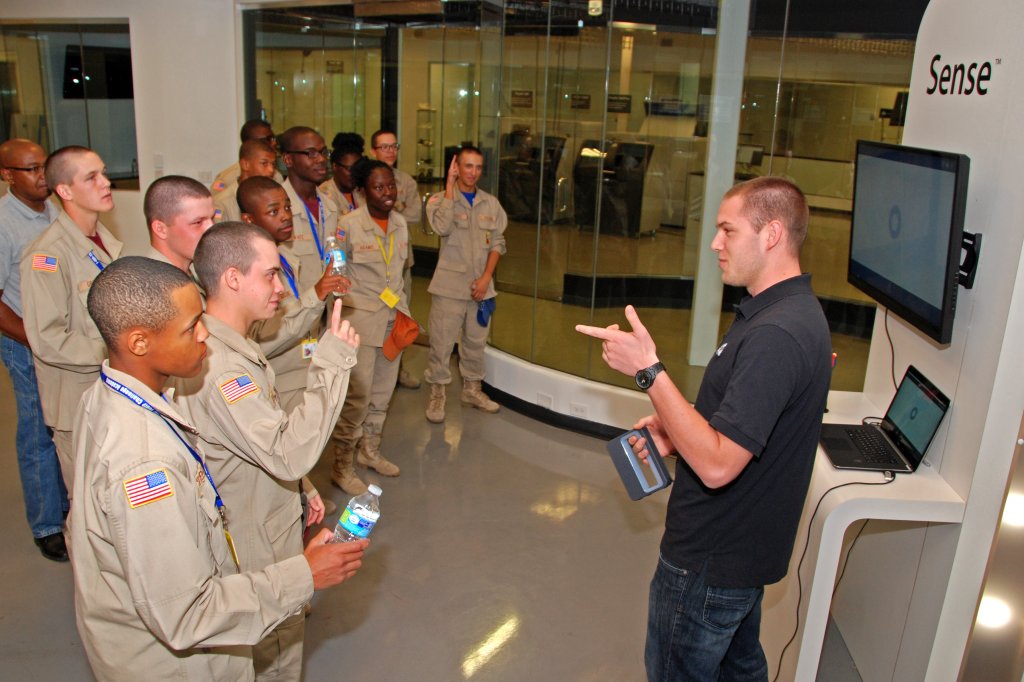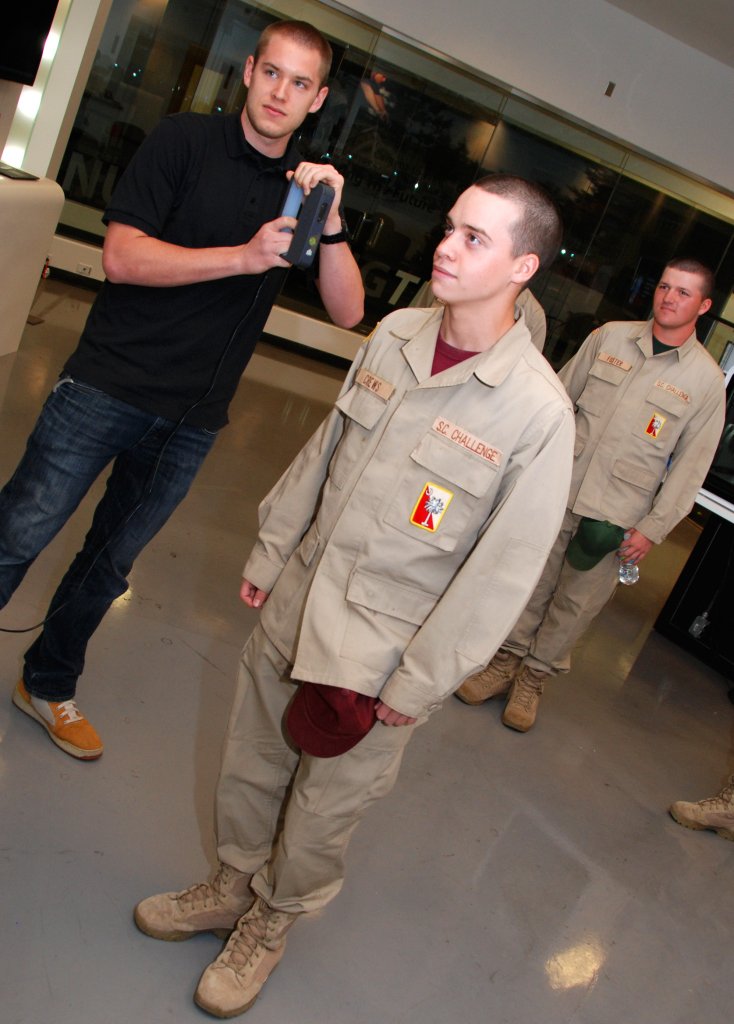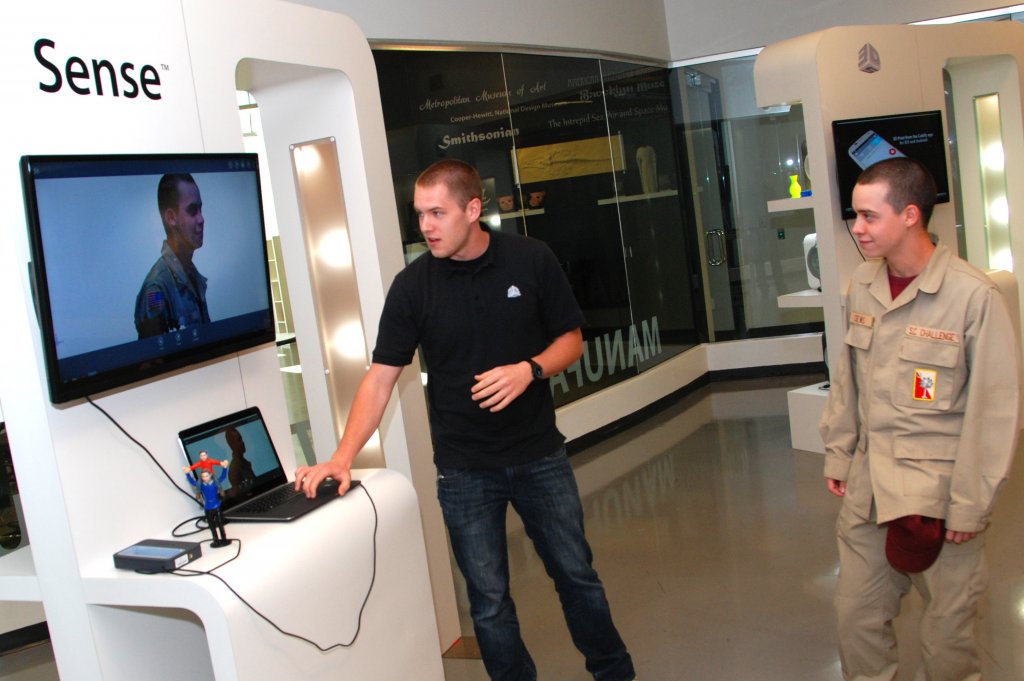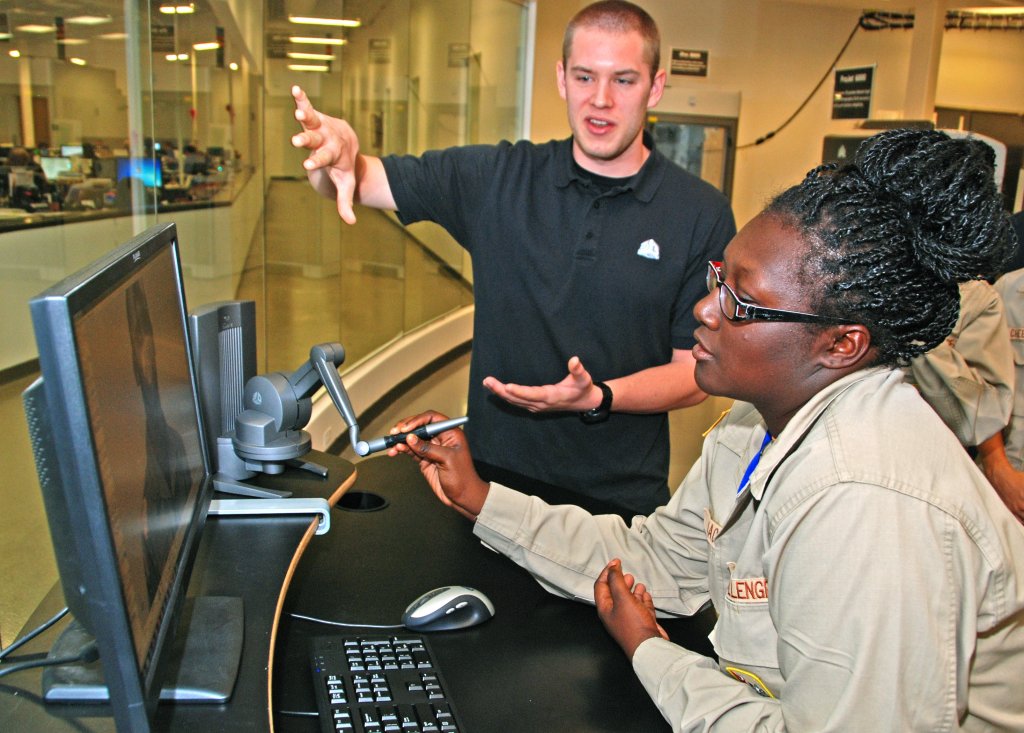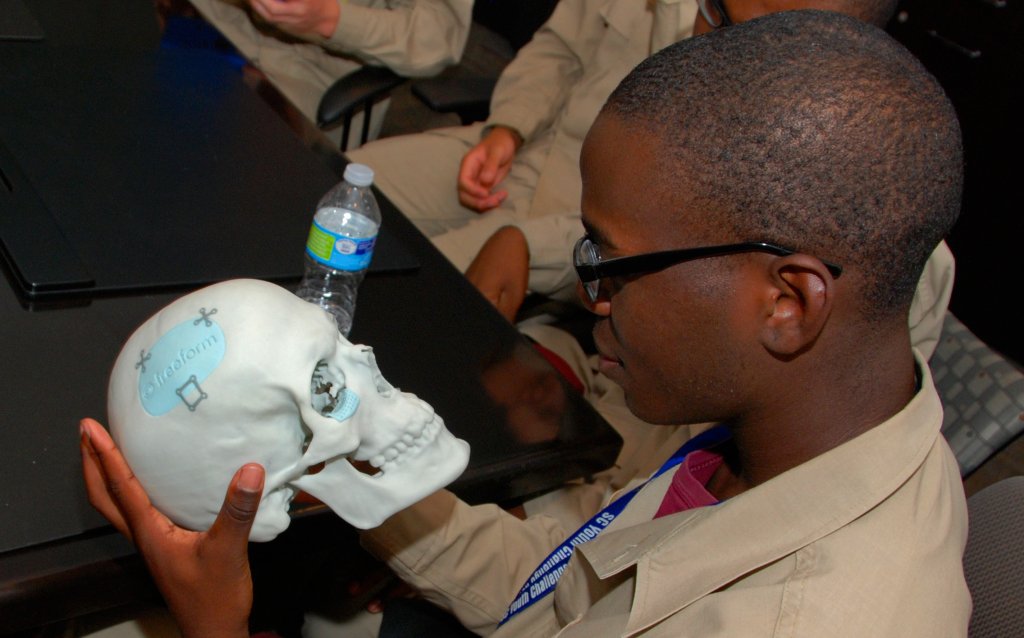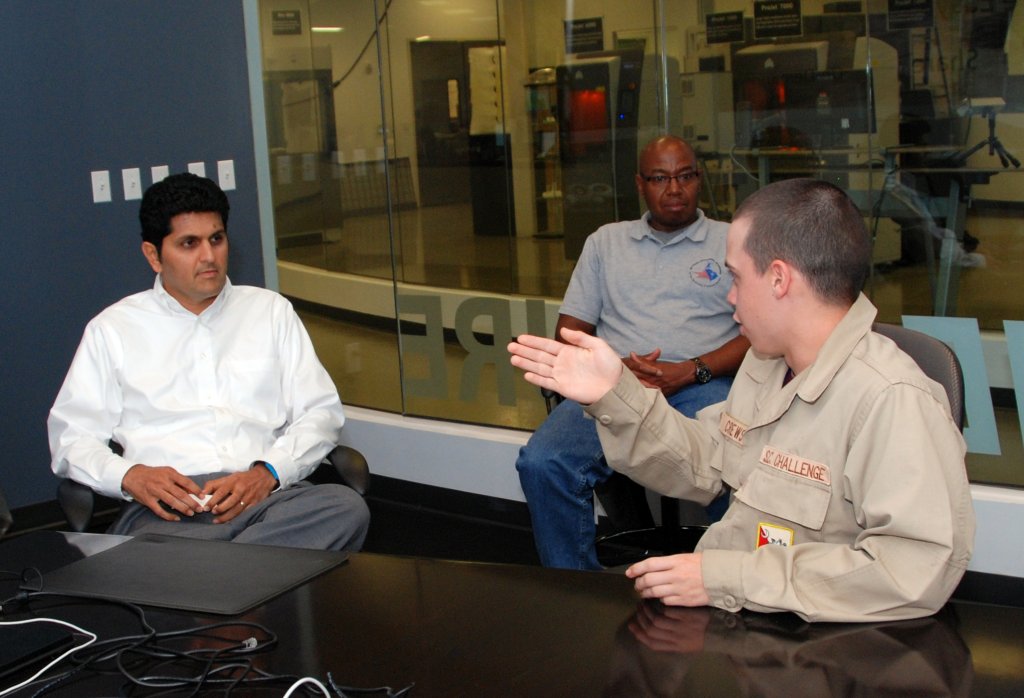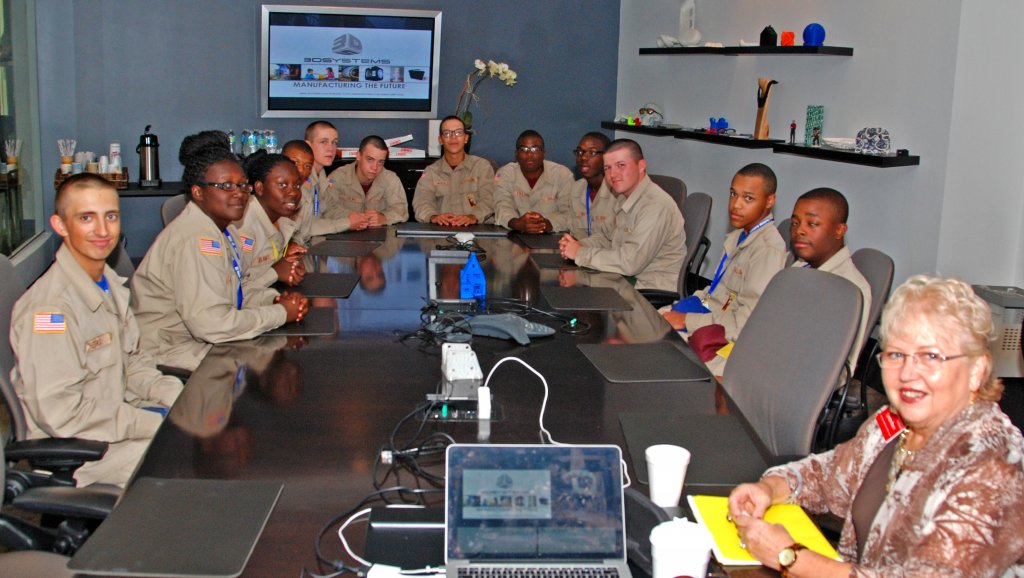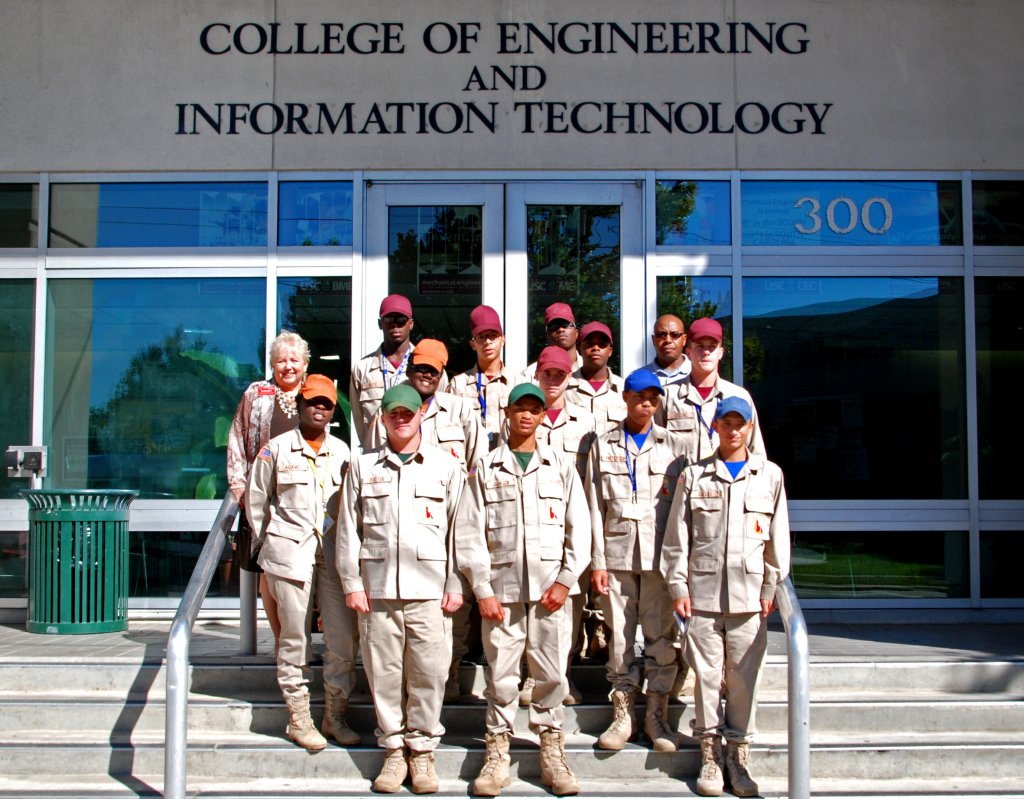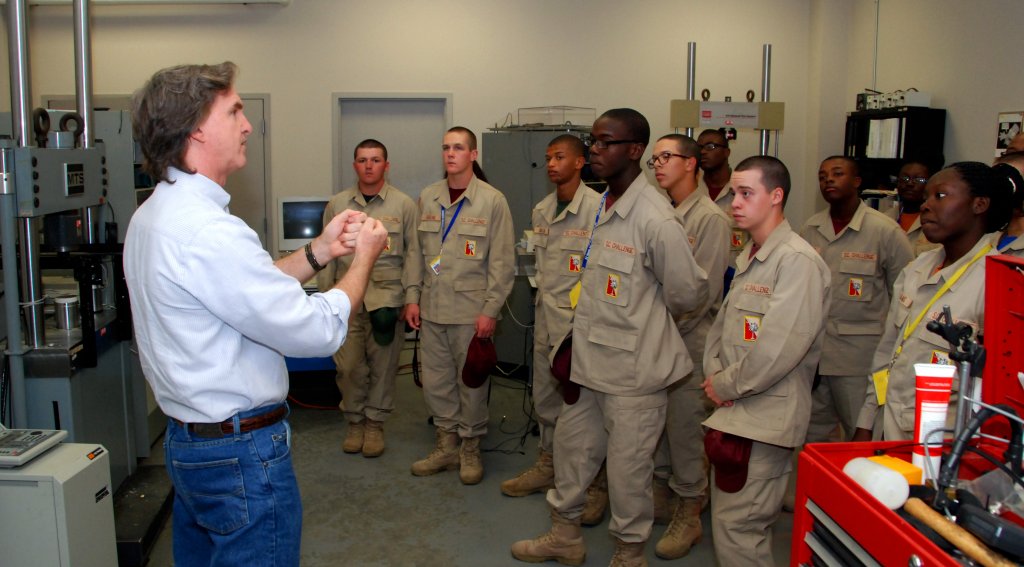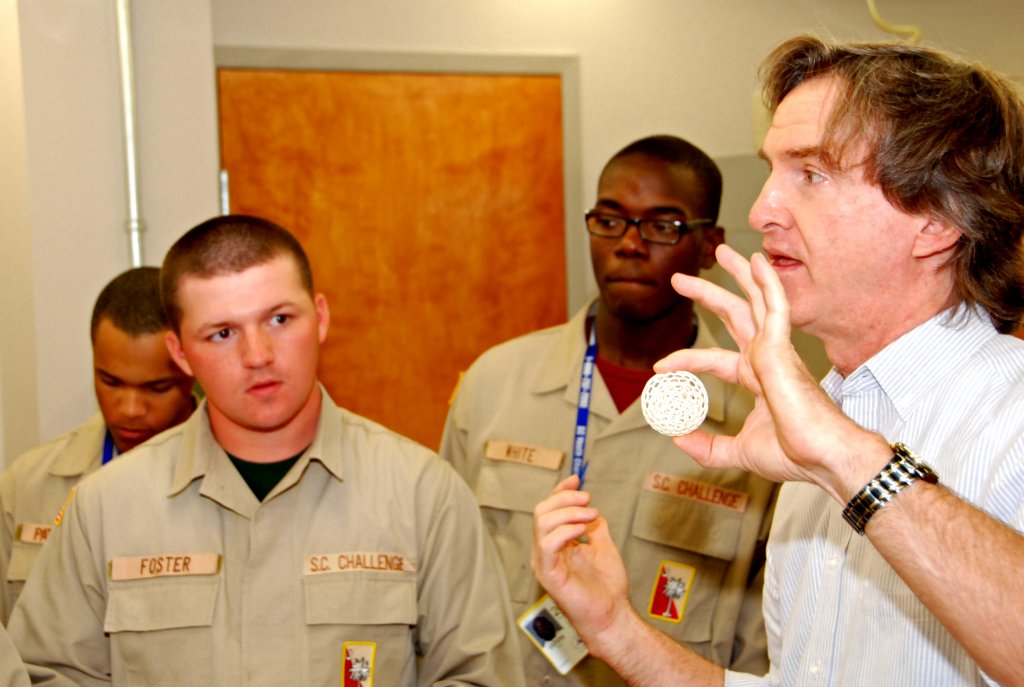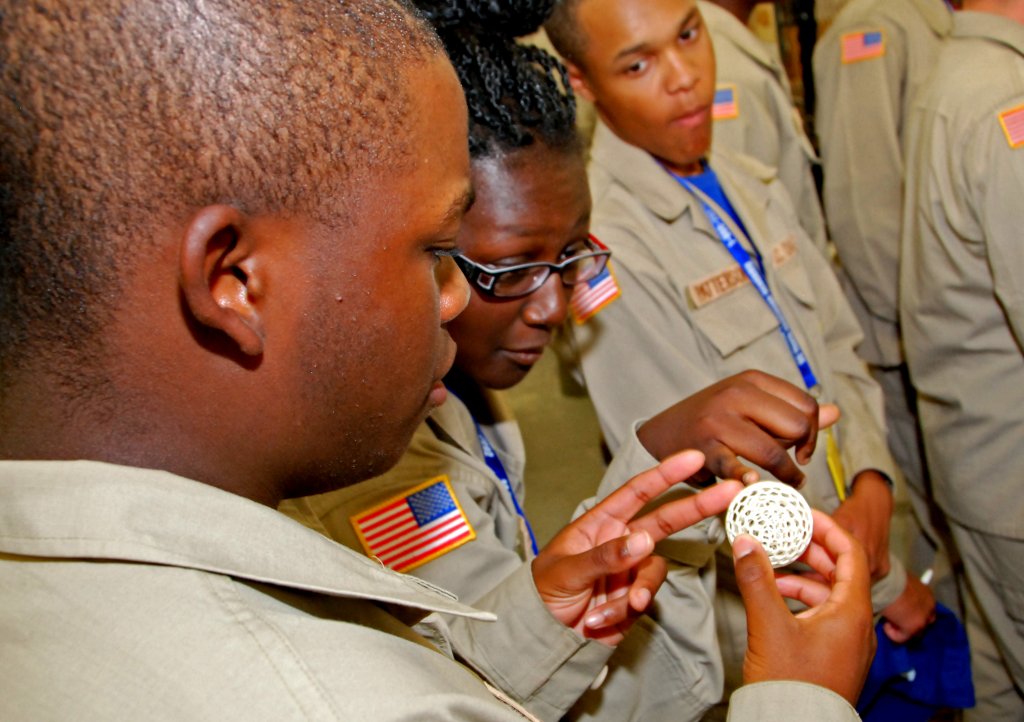Introducing at-risk youth to 3D design and printing is only one part of YouthQuest’s 3D ThinkLink Initiative. Our larger purpose is to help troubled teens learn to think in new ways and dream big.
One way we do that is through Vocational Orientation events, which are a requirement for completion of the 3D ThinkLink training we provide for National Guard Youth ChalleNGe Programs in South Carolina, Maryland and Washington, DC. Students spend a day touring businesses and universities to see real-world applications for the concepts they’re learning about in class.
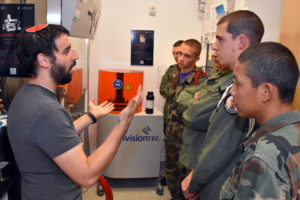
Many of the kids we serve have struggled with academics and their life experience is severely limited. Before they enrolled in a ChalleNGe Academy, few imagined themselves pursuing higher education or a career in a STEAM (Science, Technology, Engineering, Art, Math)-related field.
That’s why being in a college lab or a high-tech manufacturing facility for the first time can be a life-changing moment for these at-risk teens. In essays they write about how our 3D ThinkLink training affected their lives, students frequently mention being inspired by something they saw during Vocational Orientation.
In October, our Maryland and DC students enjoyed a full day of eye-opening experiences, starting with a visit to the newly opened City Garage in South Baltimore. The former bus garage has been transformed into a wonderland of innovation, anchored by Under Armour’s Lighthouse, a 35,000-square-foot design and manufacturing center. The UA Lighthouse includes a room equipped with more than 50 cameras for 3D scanning of athletes. Designers use the scans to create individually tailored sportswear. The students also learned that UA uses 3D design and printing to prototype footwear and apparel.
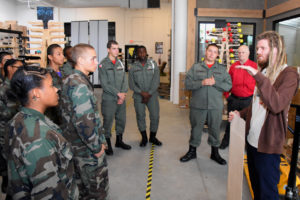
Elsewhere in the City Garage complex, the kids had fun at the Bustin Boards skateboard company. Along with trying out the boards, they discovered that the Moment of Inspiration software they’re learning to use in class is the same type of CAD (Computer Aided Design) program the company’s designers use. That led to a discussion about how CAD skills are needed for both 3D printing, or “additive manufacturing,” in which machines build objects by putting material only where it is needed, and traditional “subtractive manufacturing,” in which machines cut away material to form objects.
All kinds of additive and subtractive manufacturing devices were on display next door at The Foundery, a large makerspace. In the midst of all that modern technology, the kids also got some hands-on experience with one of the oldest manufacturing methods – blacksmithing. After heating, pounding and bending red-hot steel, the kids surely gained an appreciation for 3D software that can turn a simple shape into something useful or decorative with just a few clicks of a mouse.
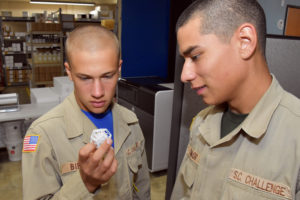
Students from South Carolina Youth ChalleNGe Academy also saw additive and subtractive manufacturing processes in action as they visited Duncan-Parnell’s 3D printing department in Charlotte, NC, 3D Systems headquarters in Rock Hill, SC and the University of South Carolina Department of Mechanical Engineering in Columbia.
The medical uses for 3D printing often strike a chord with our 3D ThinkLink students.
The kids from Maryland’s Freestate and DC’s Capital Guardian Youth ChalleNGe Academies were fascinated to see how 3D printing is used to develop things like bone and vascular replacements in the University of Maryland’s Biomaterials and Tissue Engineering Lab.
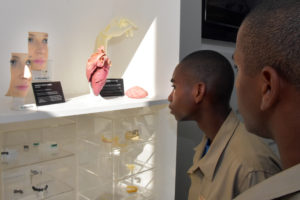
At 3D Systems, the South Carolina students learned about the company’s work in the fast-growing specialty of pre-surgery modeling. A 3D Systems team recently worked with doctors at Children’s Hospital at Montefiore in New York who separated baby brothers joined at the head. They were able to plan and practice every step of the complex surgery thanks to precise 3D-printed models made from MRIs and CT scans of the boys’ skulls.
We often remind students that being exposed to new ideas and experiences literally makes their brains grow, as new connections between neurons are formed. Our field trips also open students’ minds and expand their view of what’s possible. Vocational Orientation events make these at-risk teens aware of opportunities they had never imagined. While they may not end up working on the cutting edge of technology, the thinking skills and confidence they develop during their 3D ThinkLink experience will help them make the most of any opportunity they choose to pursue.
